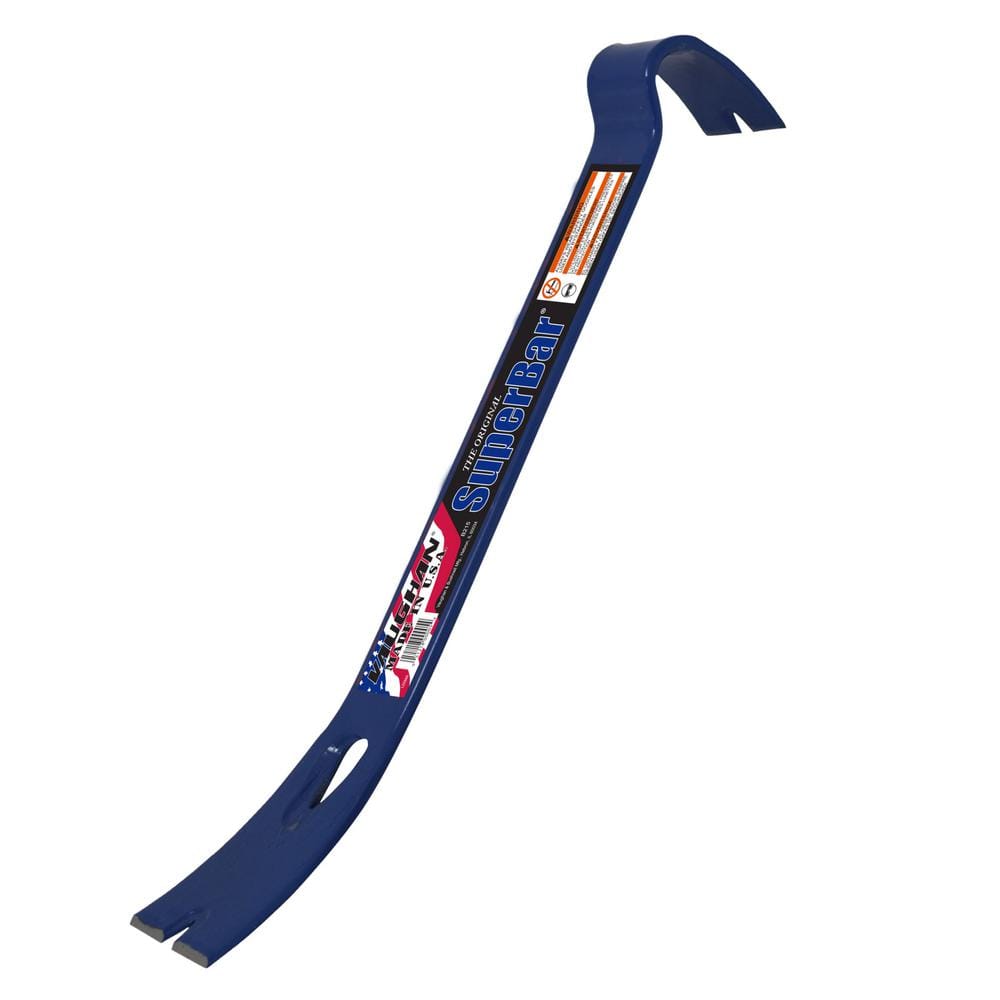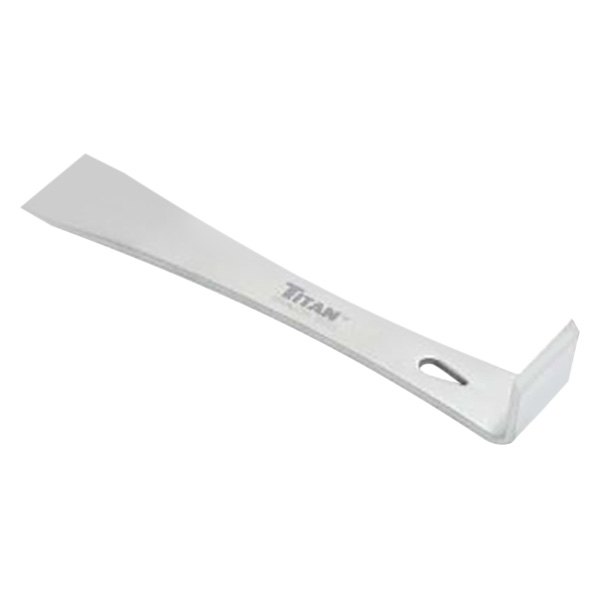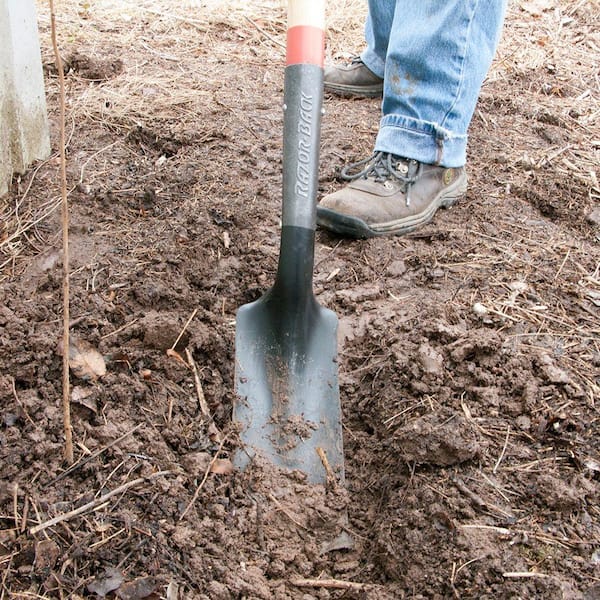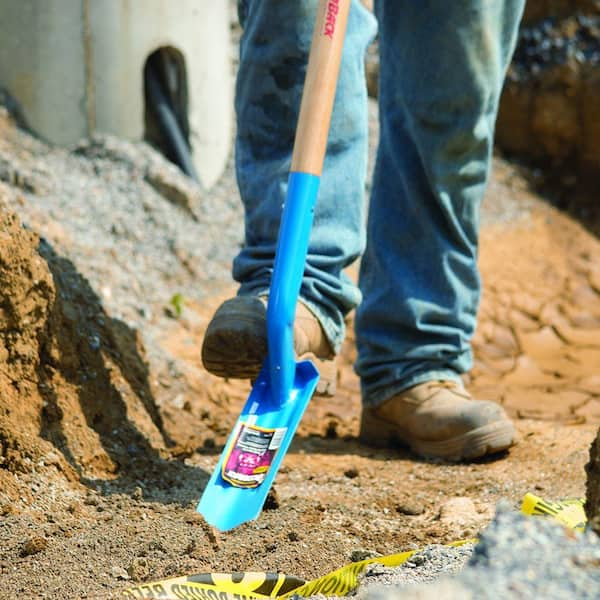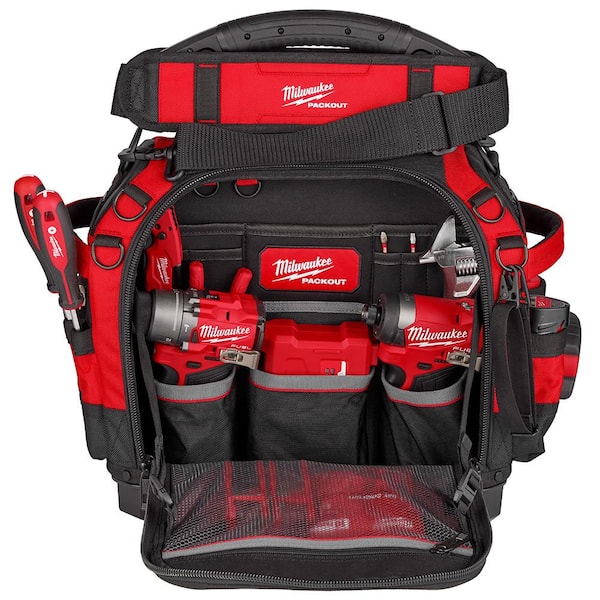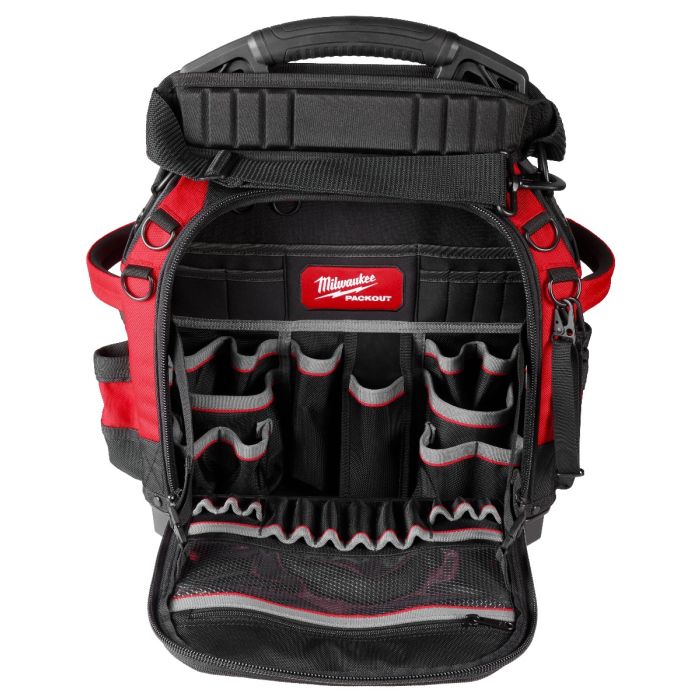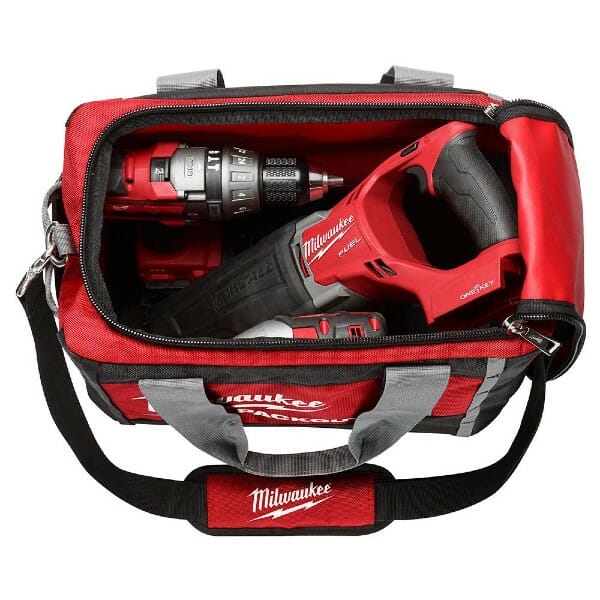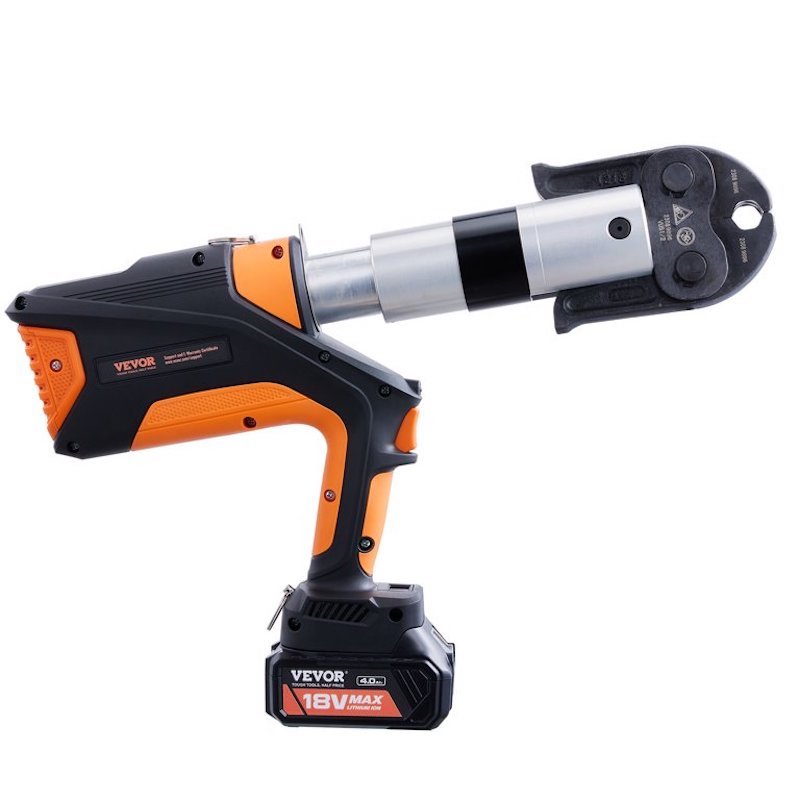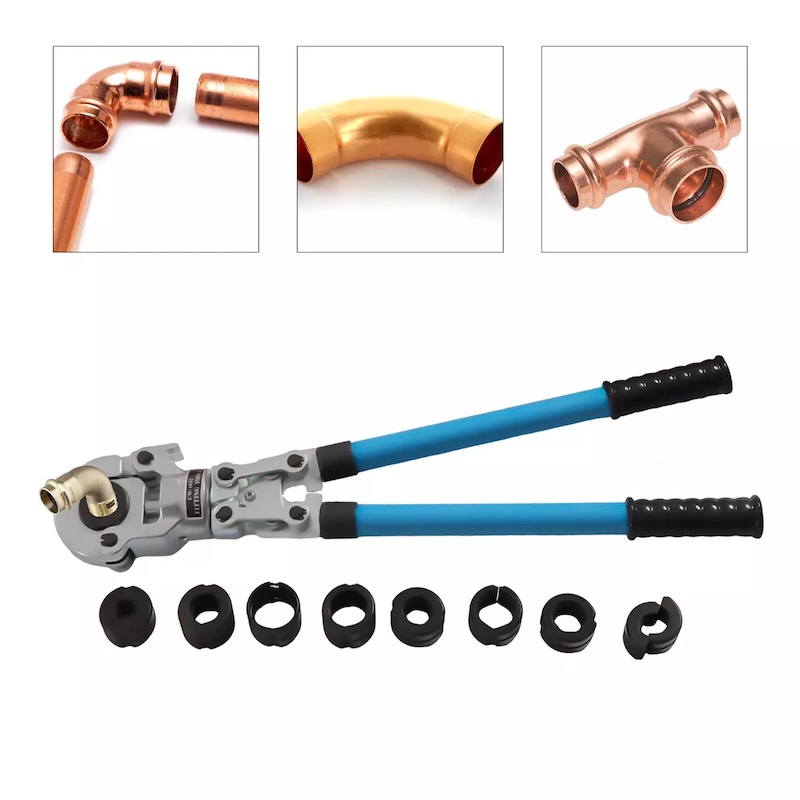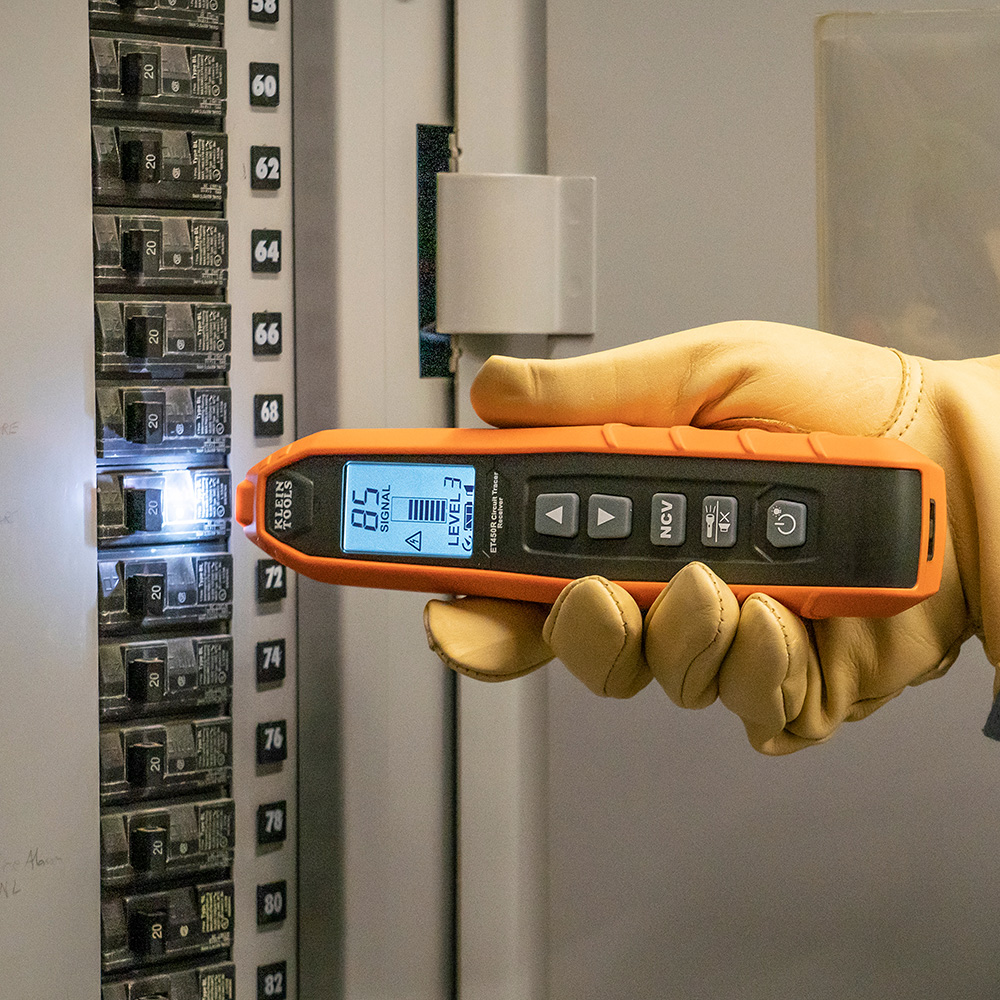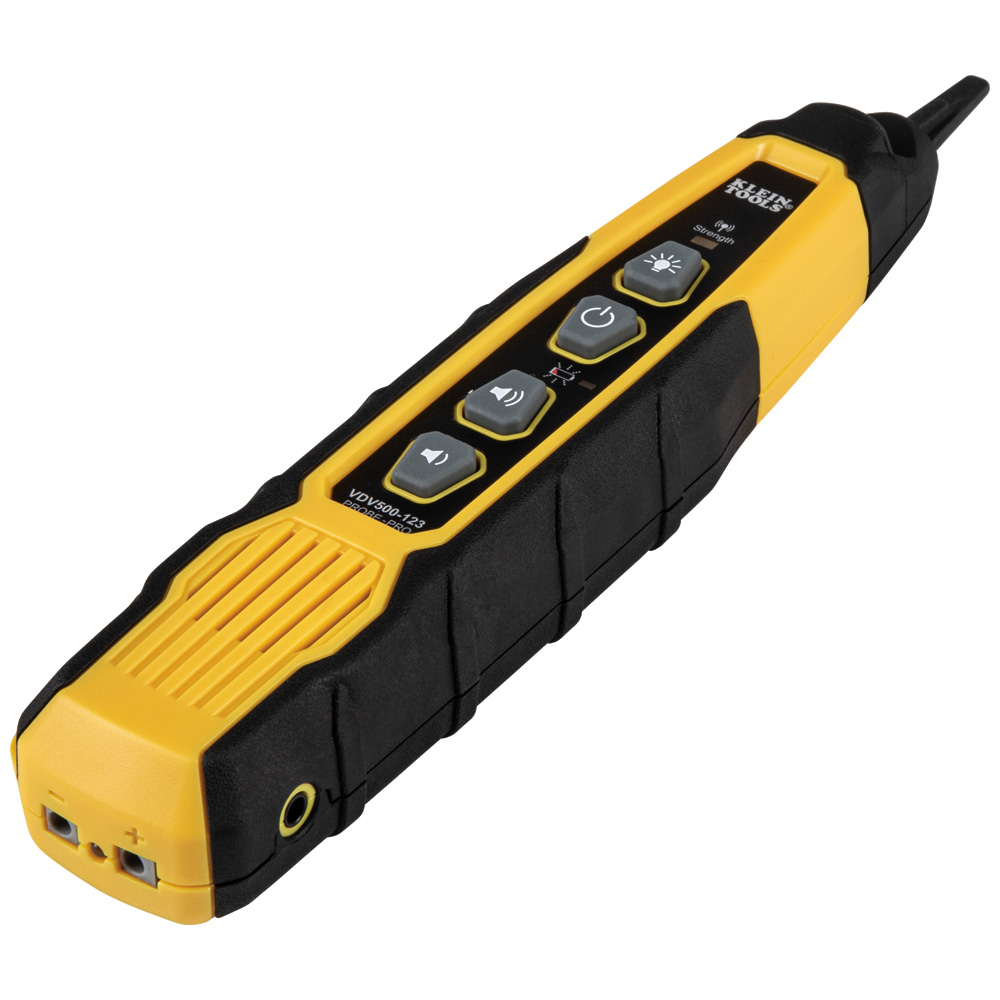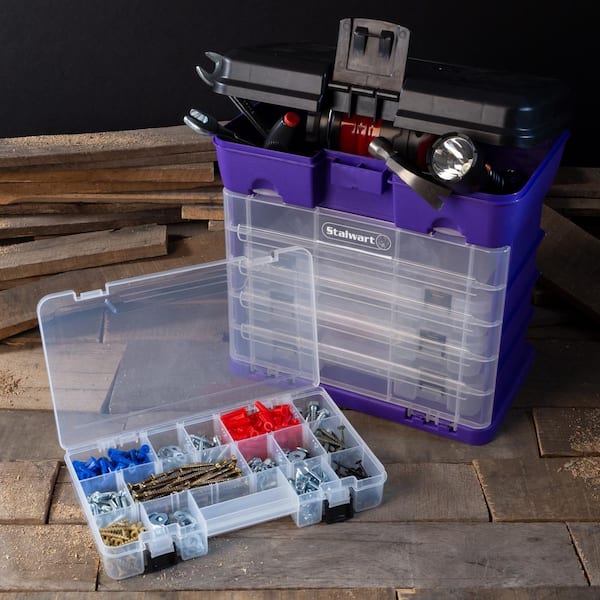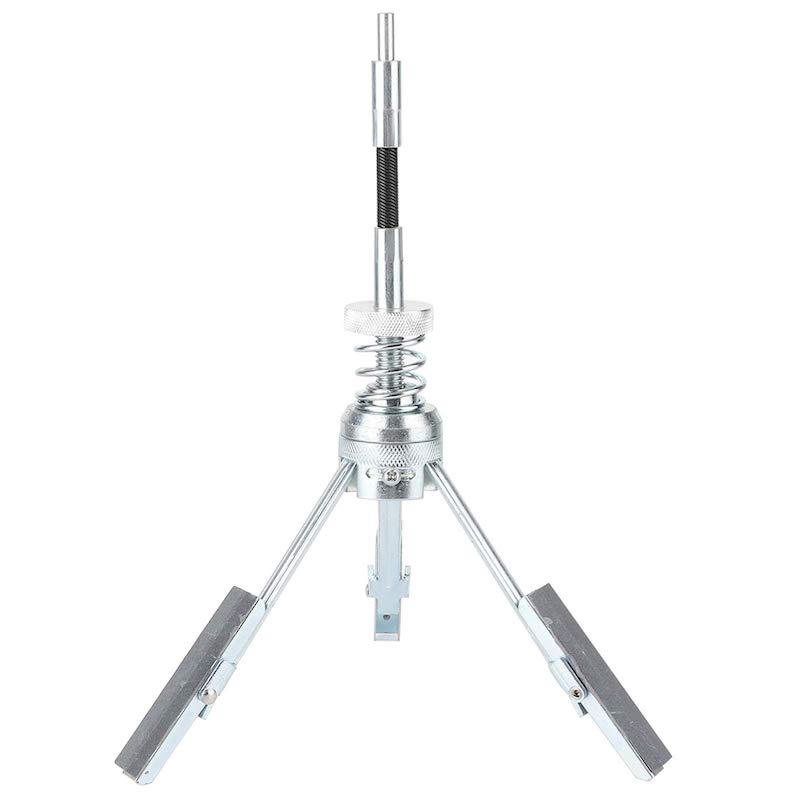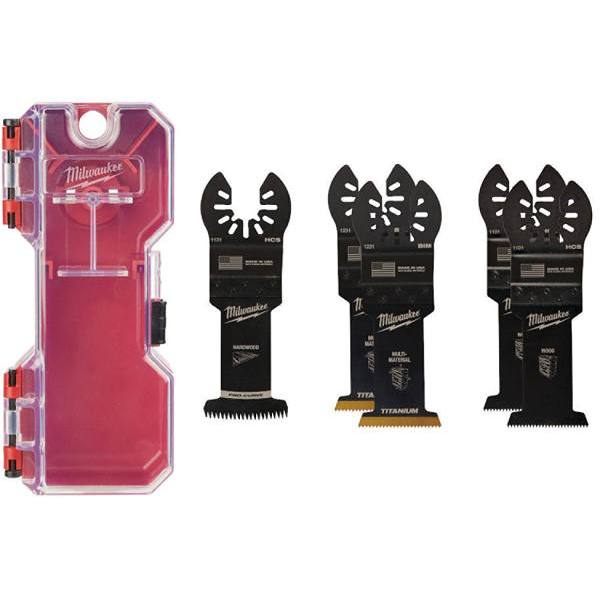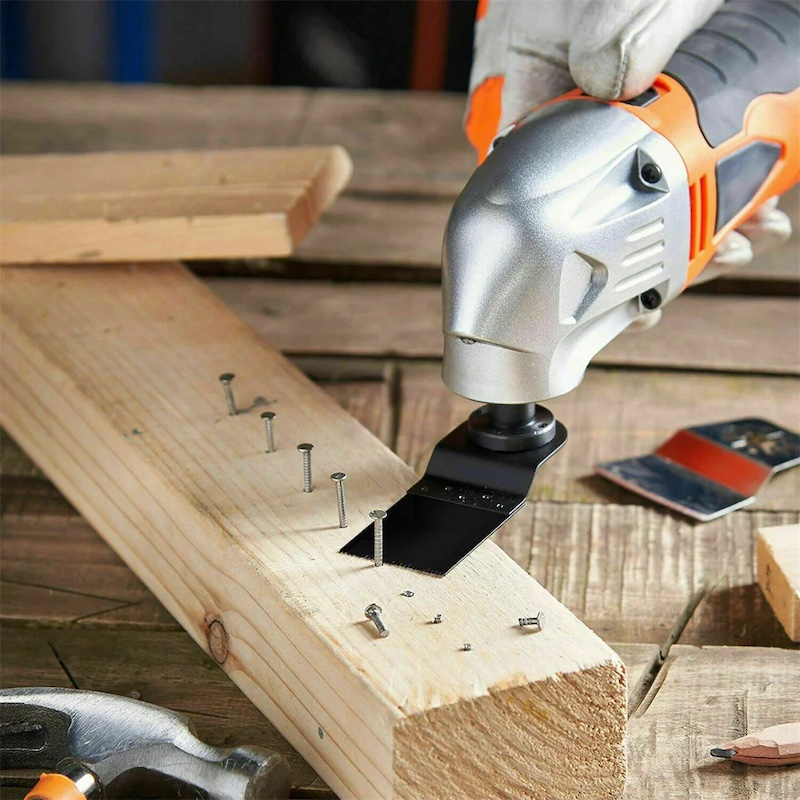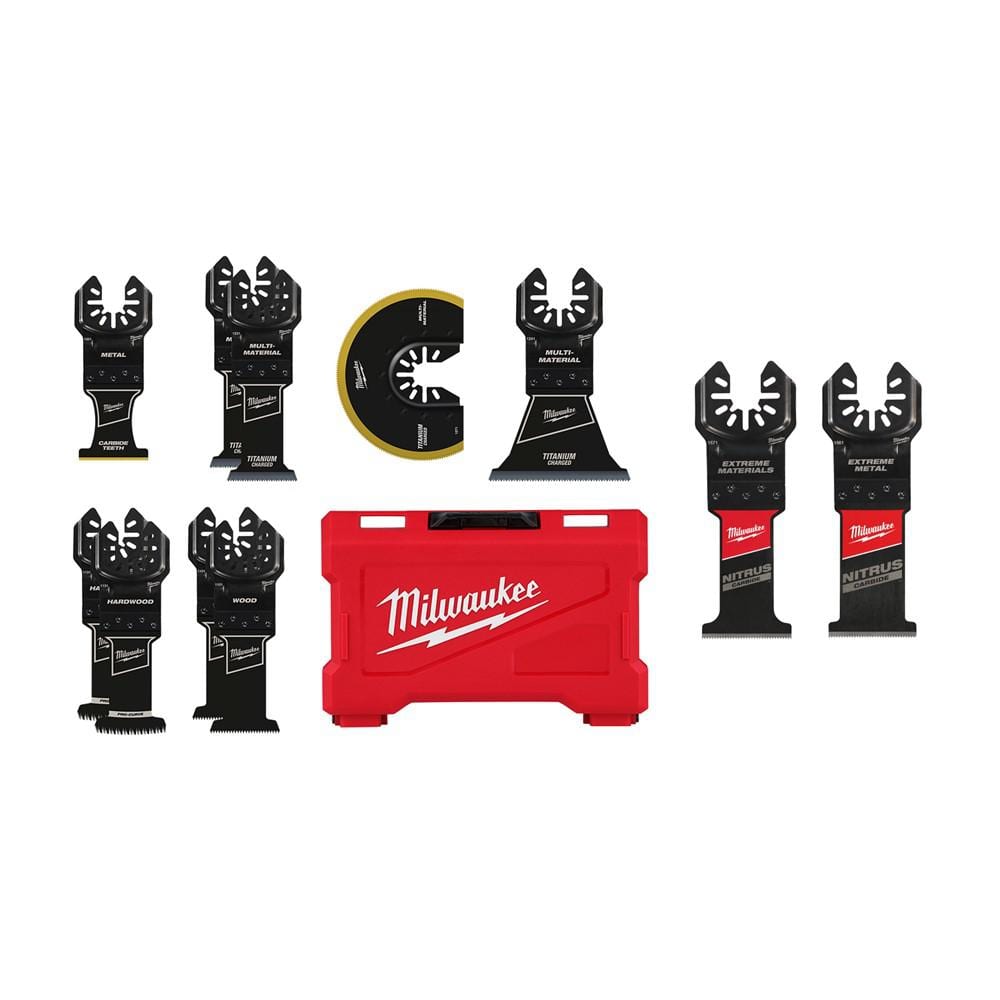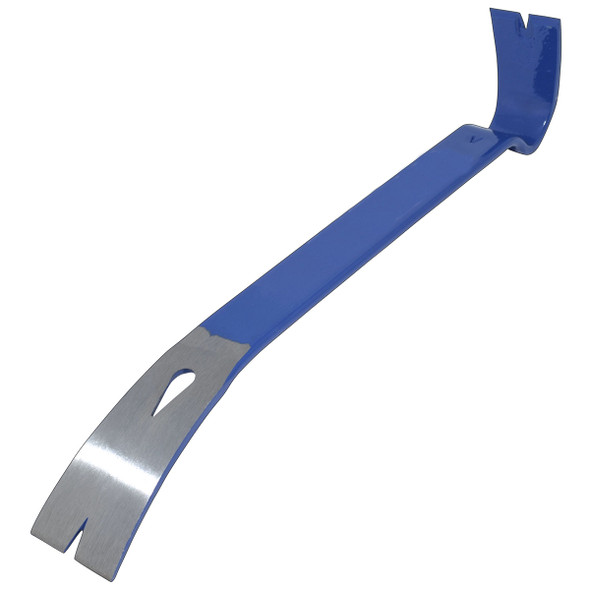
The Flat Bar Tool: A Versatile Must-Have for Every Toolbox
Introduction
The flat bar tool, also known as a pry bar or crowbar, is a versatile and essential tool for any DIY enthusiast or professional tradesperson. With its flat, chisel-shaped end and a beveled edge, this tool can be used for a wide range of tasks, from demolition and renovation to carpentry and construction. In this article, we will explore the many uses of the flat bar tool and how it can make your work easier and more efficient.
Part 1: Demolition
Level 1: The flat bar tool is an indispensable tool for demolition projects, whether you are tearing down an old deck or removing old drywall. Its flat, chisel-shaped end allows you to easily pry and remove nails, screws, and staples, while its beveled edge can be used to break apart stubborn materials. This tool is also handy for removing trim, baseboards, and molding without damaging the surrounding surfaces.
Level 2: Additionally, the flat bar tool can also be used to break apart concrete, tile, and other hard surfaces. Its sturdy construction and leverage make it a powerful tool for breaking and prying up stubborn materials, making light work of otherwise challenging demolition tasks.
Part 2: Carpentry
Level 1: The flat bar tool is not just for demolition – it is also an invaluable tool for carpentry projects. Its chisel-shaped end can be used for precise prying and lifting, while its beveled edge makes it easy to remove old glue, caulk, or paint from surfaces. It can also be used to straighten out warped boards and for fine-tuning the fit of joints and connections.
Level 2: Whether you are installing new flooring, framing a new wall, or building custom furniture, the flat bar tool can help you achieve professional-looking results. Its versatility and precision make it an essential tool for any carpentry project, allowing you to tackle a wide range of tasks with ease and efficiency.
Part 3: Construction
Level 1: In construction, the flat bar tools is often used for aligning and adjusting framing members, prying apart stubborn connections, and removing old or damaged materials. Its chisel-shaped end can be used for precise prying and lifting, while its beveled edge makes it easier to break apart and remove materials.
Level 2: Additionally, the flat bar tools is also handy for plumbing and electrical work, allowing you to easily pry apart pipes, fittings, and electrical boxes without damaging the surrounding surfaces. Its sturdy construction and leverage make it a valuable tool for a wide range of construction tasks, making it an essential part of any tradesperson’s toolkit.
Part 4: Maintenance and Repairs
Level 1: Whether you are a homeowner or a professional maintenance technician, the flat bar tools is an essential tool for a wide range of maintenance and repair tasks. Its chisel-shaped end can be used for precise prying and lifting, while its beveled edge makes it easier to remove old or damaged materials without causing additional damage.
Level 2: From repairing damaged siding and trim to replacing floorboards and fixing door frames, the flat bar tools can help you tackle a wide range of maintenance and repair tasks with ease and efficiency. Its versatility and precision make it a must-have tool for any homeowner or maintenance professional.
Part 5: Tips for Using the Flat Bar Tool
Level 1: To get the most out of your flat bar tools, it is essential to use it safely and effectively. Always wear eye protection and gloves when using the flat bar tool, and be mindful of your surroundings to avoid accidental damage or injury. Additionally, make sure to use the proper size and type of flat bar tools for the task at hand, and always position it securely and apply even pressure to avoid slipping or damaging the surrounding surfaces.
Level 2: When using the flat bar tool for demolition, carpentry, construction, or maintenance tasks, it is important to use the proper technique to achieve the best results. For prying and lifting, position the flat bar tool at an angle and apply even pressure to avoid damaging the surrounding surfaces. For breaking apart materials, apply downward pressure at the beveled edge to break the material free.
Part 6: Benefits of Using Flat Bar Tool
A flat bar tool is an essential item in any DIY toolbox, and there are many benefits to using this versatile tool. One of the primary advantages of a flat bar tool is its ability to pry, lift, and pull apart materials with ease. Whether you are working on a construction project or simply doing some repairs around the house, a flat bar tool can make your job much easier.
Another benefit of using a flat bar tool is its durability. This makes them perfect for heavy-duty jobs that require a lot of force and pressure. In addition to its strength and durability, a flat bar tool is also incredibly versatile. Its flat, angled design allows it to fit into tight spaces and reach awkward angles, making it an indispensable tool for any DIY enthusiast.
Furthermore, a flat bar tool is relatively inexpensive, making it a cost-effective addition to your tool collection. Despite its low price, a flat bar tool is incredibly useful and can save you a lot of time and effort on various projects.
Overall, the benefits of using a flat bar tool are undeniable. Its strength, versatility, and affordability make it an essential tool for anyone who enjoys DIY projects or home repairs.
Part 7: Tips for Choosing the Right Flat Bar Tool
Choosing the right flat bar tool for your needs is essential to ensure that you get the best results from your projects. With so many options available on the market, it can be challenging to determine which flat bar tool is the right one for you. Here are some tips to help you select the perfect flat bar tool for your needs. High-quality steel is the most durable and reliable option, as it can withstand a lot of force and pressure without bending or breaking.
Next, consider the size and weight of the flat bar tool. A lightweight and compact flat bar tool is ideal for smaller projects and general home repairs, while a heavier and longer tool may be necessary for more significant construction and demolition tasks. Consider the specific projects you will be using the flat bar tool for and choose a size and weight that is appropriate for your needs.
Furthermore, consider the design of the flat bar tool. Some flat bar tools have angled ends, while others have straight edges. Angled ends can be useful for getting into tight spaces and reaching awkward angles, while straight edges are ideal for prying and lifting heavy materials. Consider the types of tasks you will be using the flat bar tool for and choose a design that will best suit your needs.
Lastly, consider the price of the flat bar tool. While it is essential to invest in a high-quality tool, you don’t want to overspend on a flat bar tool that is beyond your budget. Look for a flat bar tool that offers the best combination of quality and affordability.
By considering these tips, you can choose the right flat bar tool for your needs and ensure that you get the best possible results from your projects.
Part 8: Maintenance and Care for Flat Bar Tool
To ensure that your flat bar tools remains in optimal condition and continues to perform at its best, it is essential to provide regular maintenance and care. Proper maintenance and care can help to extend the life of your flat bar tool and prevent unnecessary wear and tear. Here are some tips for maintaining and caring for your flat bar tools.
First and foremost, it is essential to keep your flat bar tools clean and free of dirt, grease, and debris. After each use, wipe down the tool with a dry cloth to remove any excess dirt or grime. Additionally, you can use a mild solvent or degreaser to clean the tool thoroughly. This will help to prevent corrosion and rust, which can compromise the integrity of the tool.
Furthermore, it is essential to store your flat bar tools properly when it is not in use. Keep it in a dry, cool, and well-ventilated area to prevent moisture and humidity from causing damage to the tool. Consider investing in a tool storage rack or toolbox to keep your flat bar tools organized and protected.
Additionally, it is crucial to inspect your flat bar tools regularly for any signs of wear and tear. Look for bent or cracked edges, loose handles, or any other damage that may compromise the functionality of the tool. If you notice any issues, address them immediately to prevent further damage and ensure the continued effectiveness of the tool.
Conclusion
If you are using your flat bar tools for heavy-duty tasks, consider sharpening the edges periodically to ensure that the tool continues to perform at its best. A sharp edge will make prying, lifting, and pulling materials much easier and more efficient. By following these maintenance and care tips, you can ensure that your flat bar tools remains in excellent condition and continues to perform at its best for years to come.
The flat bar tool is a versatile and essential tool for any DIY enthusiast, tradesperson, or maintenance professional. Its chisel-shaped end and beveled edge make it a valuable tool for demolition, carpentry, construction, and maintenance tasks, allowing you to tackle a wide range of tasks with ease and efficiency. By using the proper technique and safety precautions, you can make the most out of this indispensable tool and achieve professional-looking results in your projects.
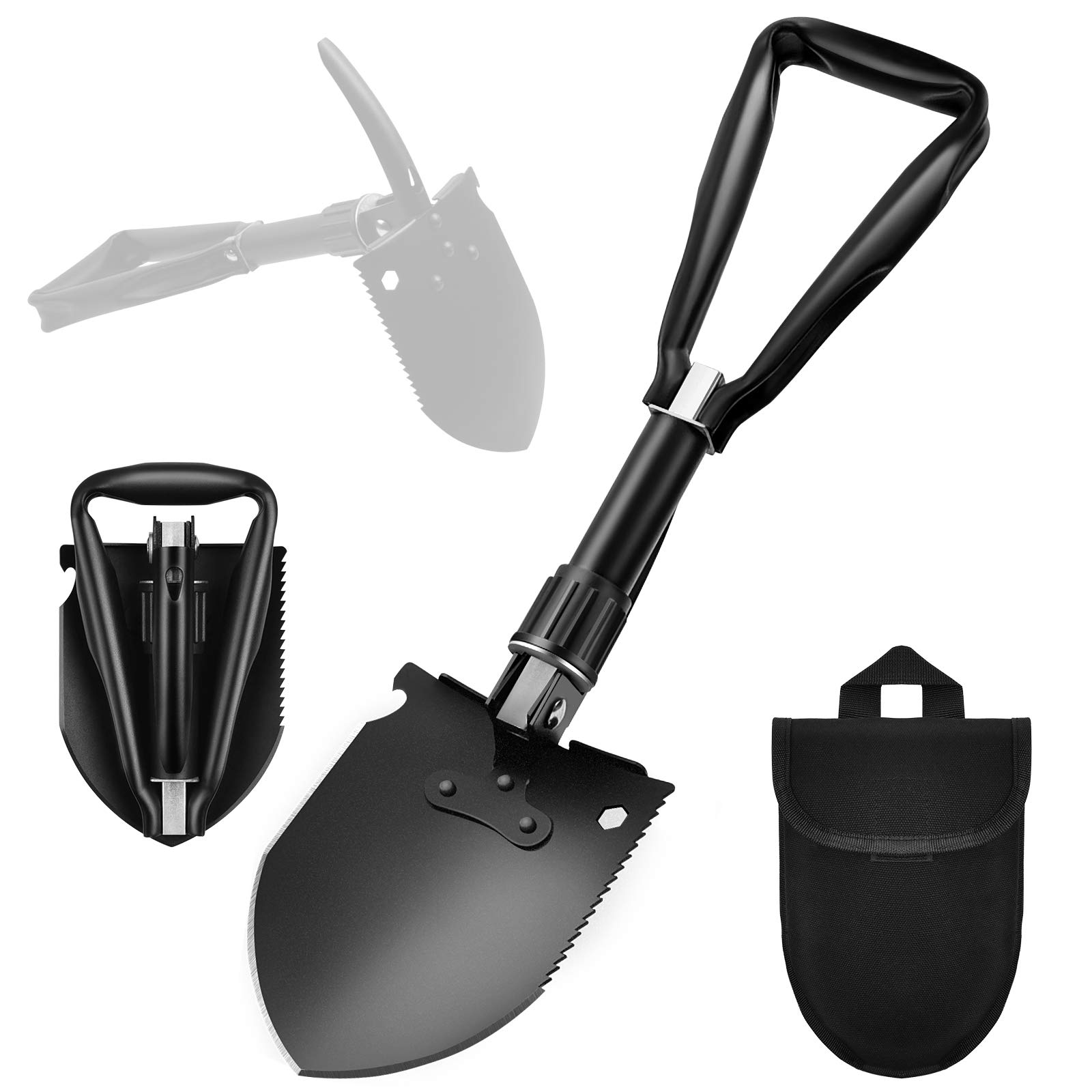
The Guide to Trenching Tool: Everything You Need to Know
Introduction
When it comes to digging trenches, having the right tools for the job is crucial. Whether you are a professional landscaper, a DIY enthusiast, or a construction worker, having the right trenching tools in your arsenal can make the task at hand much easier and more efficient. In this comprehensive guide, we will discuss everything you need to know about trenching tools, including the different types of tools available, their uses, and how to choose the right tool for your specific needs.
Part 1: Types of Trenching Tools
1.1 Handheld Trenching Tools
- Shovels: Traditional shovels are a popular choice for digging trenches as they are versatile and can be used for a variety of tasks.
- Mattocks: Mattocks have a pick on one end and a wide, flat blade on the other, making them ideal for digging through hard soil and roots.
1.2 Power Trenching Tools
- Trenching Machines: Trenching machines are powered tools that are used for digging large, deep trenches quickly and efficiently.
- Trenching Excavators: Trenching excavators are heavy-duty machines that are capable of digging trenches of various sizes and depths.
Part 2: Uses of Trenching Tools
2.1 Landscaping
- Installing irrigation systems: Trenching tools are essential for laying down piping for irrigation systems in gardens and lawns.
- Planting trees and shrubs: Trenching tools can be used to dig trenches for planting trees and shrubs, creating a healthy environment for the roots to grow.
2.2 Construction
- Installing utility lines: Trenching tools are used to dig trenches for laying down utility lines, such as water, gas, and electrical lines.
- Creating drainage systems: Trenching tools are essential for creating drainage systems to prevent water from pooling around buildings and structures.
Part 3: Choosing the Right Trenching Tool
3.1 Consider the Type of Soil
- For soft soil, a standard shovel or mattock may be sufficient, while harder soil may require a power trenching tool such as a trenching machine or excavator.
- Consider the presence of rocks and roots, as these may require specialized trenching tools or attachments.
3.2 Depth and Width of the Trench
- For shallow trenches, handheld trenching tools may be sufficient, while deeper and wider trenches may require the use of power trenching tools.
- Consider the specific dimensions required for the trench, as this will determine the type of tool needed.
Part 4: Safety Considerations
4.1 Protective Gear
- When using trenching tools, it is important to wear protective gear such as gloves, safety goggles, and steel-toed boots to prevent injury.
- For power trenching tools, hearing protection and respiratory protection may also be necessary.
4.2 Underground Utilities
- Always ensure that you are aware of the location of underground utilities before digging trenches to avoid potential accidents and damage to infrastructure.
- Consider using ground-penetrating radar or contacting your local utility company to locate underground utilities before beginning any trenching work.
Part 5: Proper Maintenance and Storage
5.1 Cleaning and Inspection
- After each use, it is important to clean trenching tools thoroughly to remove dirt, debris, and moisture that can cause rust and corrosion.
- Regularly inspect trenching tools for wear and tear, and replace any damaged or worn parts to ensure optimal performance and safety.
5.2 Storage and Transport
- Store trenching tools in a dry, secure location to prevent rust and damage.
- When transporting trenching tools, ensure that they are properly secured and protected to prevent damage and accidents.
Part 6: Benefits of Using a Trenching Tool
Trenching tools offer several benefits that make them an essential addition to any construction or landscaping arsenal. One of the main advantages of using a trenching tool is the efficiency it provides in digging trenches. With the right tool, trenches can be dug quickly and easily, saving time and effort. Trenching tools also provide precision, allowing for accurate digging and reducing the risk of errors in trench placement.
Another benefit of trenching tools is their versatility. These tools for a wide range of applications, are including laying down pipes and cables, installing irrigation systems, and creating drainage ditches. Trenching tools are also available in various sizes and configurations to accommodate different trenching requirements, making them suitable for a variety of projects.
Furthermore, trenching tools are designed to be durable and reliable, ensuring they can withstand the rigors of regular use in challenging conditions. The robust construction of these tools means they can handle demanding tasks without succumbing to wear and tear easily. This durability makes them a cost-effective investment for professionals and individuals who frequently undertake trenching work.
In addition to their practical benefits, trenching tools also contribute to safety on the job site. By providing a specialized tool for trenching, workers can minimize the risks associated with manual trench digging, such as back strain and exposure to hazardous materials. This can lead to a safer work environment and reduce the likelihood of workplace accidents.
Overall, the use of trenching tools offers numerous advantages, including efficiency, versatility, durability, and safety. These benefits make them a valuable tool for various trenching projects, contributing to enhanced productivity and effectiveness on the job site.
Part 7: Maintaining and Caring for Trenching Tools
To ensure the ongoing functionality and effectiveness of trenching tools, it is essential to implement a proper maintenance and care routine. Proper maintenance helps to extend the lifespan of the equipment, minimize downtime due to breakdowns, and ensure safe operation during trenching tasks.
One crucial aspect of maintaining trenching tools is regular cleaning. After each use, you should remove the dirt, debris, and any potentially corrosive substances that may have accumulated during the operation. This prevents the build-up of damaging particles and ensures that the tool remains in optimal condition.
In addition to cleaning, it is important to inspect the trenching tool for any signs of wear or damage. This includes checking for loose or damaged components, worn cutting edges, and any indications of rust or corrosion. Identifying and addressing these issues promptly can prevent them from escalating into more significant problems that could compromise the tool’s performance.
Another essential aspect of maintenance is lubrication. Trenching tools contain moving parts that require proper lubrication to function smoothly and prevent premature wear. Applying the appropriate lubricant to the tool’s components as per the manufacturer’s recommendations helps to maintain their functionality and extend their lifespan. Furthermore, storing trenching tools properly is crucial to prevent damage and ensure their longevity. A well-organized storage area will also help to prevent accidents and ensure the tools remain in good condition.
Part 8: Choosing the Right Trenching Tool for Your Project
Selecting the appropriate trenching tool for a specific project is essential to ensure efficiency, productivity, and safety. With a variety of trenching tools available, from manual to powered options, it is crucial to consider various factors when choosing the right tool for the job.
The size and scope of the trenching project are significant factors to consider when selecting a trenching tool. For smaller-scale projects or precision work, a manual trenching tool, such as a hand trencher, may be sufficient. These tools offer greater control and maneuverability, making them suitable for intricate trenching tasks.
In contrast, larger-scale projects with more extensive trenching requirements may benefit from powered trenching tools, such as trenchers or excavators. Powered tools can significantly reduce the time and effort required for digging trenches, making them ideal for projects with high-volume trenching needs. Additionally, powered trenching tools are capable of handling tougher soil conditions and larger trench dimensions, making them suitable for more extensive projects.
The type of soil and ground conditions also play a critical role in choosing the right trenching tool. Different soil types, such as clay, sand, or rocky soil, may require specific tools or attachments to effectively dig trenches. Additionally, the presence of obstacles, such as tree roots or rocks, may necessitate specialized trenching tools with capabilities to handle these challenges.
Conclusion
Trenching tools are essential for a wide range of tasks, from landscaping to construction, and having the right tool for the job can make all the difference. By understanding the different types of trenching tools available, their uses, and how to choose the right tool for your specific needs, you can ensure that your trenching projects are completed safely and efficiently. Remember to always prioritize safety, proper maintenance, and storage when working with trenching tools.
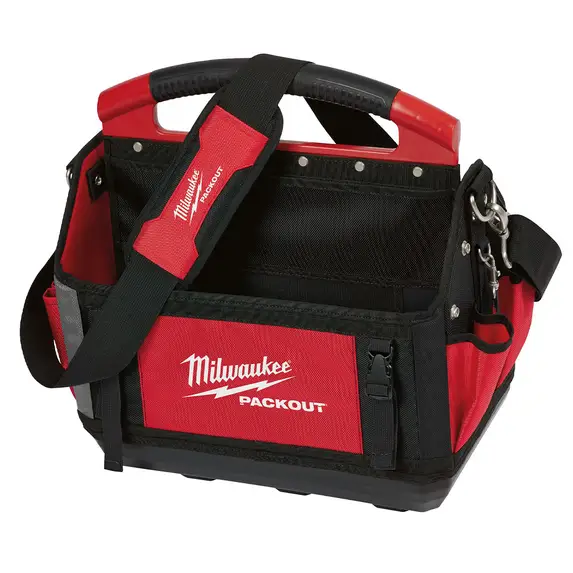
The Ultimate Guide to the Milwaukee Packout Tool Bag
Introduction:
Whether you’re a professional contractor or a DIY enthusiast, this versatile and durable storage solution is designed to meet the needs of any trade. When it comes to keeping your tools organized and easily accessible, the Milwaukee Packout Tool Bag is a game changer. This innovative storage solution is designed with durability and convenience in mind, making it the perfect choice for professionals and DIY enthusiasts alike. In this comprehensive guide, we’ll explore everything you need to know about Milwaukee Packout Tool Bags, from its key features to its unique benefits and how it can help you stay organized on the job.
Part 1: Key Features of the Milwaukee Packout Tool Bag
Level 1: Heavy-Duty Construction
Milwaukee Packout Tool Bags is built to withstand the rigors of daily use. It features a durable, water-resistant material that can withstand tough job site conditions, ensuring that your tools stay safe and secure.
Level 2: Modular Design
One of the standout features of Milwaukee Packout Tool Bags is its modular design. This allows you to customize your storage solution to meet your specific needs, whether you need to transport a few essential tools or an extensive collection.
Part 2: Benefits of the Milwaukee Packout Tool Bag
Level 1: Enhanced Organization
With Milwaukee Packout Tool Bags, you’ll never have to waste time searching for the right tool. Its customizable storage compartments and pockets allow you to keep everything neatly organized and easily accessible, saving you valuable time on the job.
Level 2: Easy Transport
The Milwaukee Packout Tool Bag is designed with mobility in mind. Its durable handle and rugged wheels make it easy to transport your tools from one job site to the next, without the hassle of lugging around a heavy, cumbersome tool bag.
Part 3: Versatility of the Milwaukee Packout Tool Bag
Level 1: Integration with Packout System
The Milwaukee Packout Tool Bag is part of the Packout Modular Storage System, which means it can be easily integrated with other Packout products such as organizers, tool boxes, and storage totes. This allows for seamless organization and transport of all your tools and accessories in one cohesive system.
Level 2: Ideal for Professionals and DIY Enthusiasts
Whether you’re a professional contractor or a DIY enthusiast, the Milwaukee Packout Tool Bag is a versatile solution for keeping your tools organized and accessible. Its rugged construction and customizable design make it well-suited for a wide range of applications.
Part 4: Real-World Applications of the Milwaukee Packout Tool Bag
Level 1: Construction and Carpentry
For professionals in the construction and carpentry industries, Milwaukee Packout Tool Bags is an invaluable asset. Its durability and organization capabilities make it the perfect companion for keeping all essential tools at hand on the job site.
Level 2: Automotive and Maintenance
In the automotive and maintenance fields, organization is key to efficiency. Milwaukee Packout Tool Bags provide a convenient and durable solution for transporting and accessing tools, whether on a service call or a major repair job.
Part 5: Tips for Getting the Most Out of Your Milwaukee Packout Tool Bag
Level 1: Customize Your Configuration
Take advantage of the modular design of the Milwaukee Packout Tool Bag by customizing the configuration to suit your specific needs. Whether it’s adding dividers, organizers, or attaching it to other Packout products. You can make the most of the versatility this storage solution offers.
Level 2: Regular Maintenance and Care
To ensure your Milwaukee Packout Tool Bag remains in top condition, it’s important to perform regular maintenance and care. Keep it clean, inspect for any signs of wear, and store it in a dry, secure location when not in use.
Part 6: Durability and Protection
The Milwaukee Packout tool bag’s durability and ability can protect your tools and equipment. The rugged construction and the impact-resistant polymer base ensure that your tools are safe and secure during transportation and storage. The tool bag is also designed to withstand harsh job site conditions. Including rain, snow, and other elements. It is built to last and will provide reliable protection for your valuable tools for years to come.
In addition to its durability, the tool bag also features reinforced metal zippers. They provide extra security and protection for your tools. The zippers can withstand frequent use and make it easy to access your tools when you need them. The reinforced metal zippers also ensure that your tools stay in place and do not fall out during transportation.
Overall, Milwaukee Packout tool bags is a reliable and durable solution for storing and transporting your tools. Its rugged construction, impact-resistant base, and reinforced metal zippers provide maximum protection and security for your valuable equipment.
Part 7: Versatility and Organization
Milwaukee Packout tool bags is with versatility and organization in mind. It features a variety of internal and external pockets, pouches, and straps. It will allow you to keep your tools and equipment organized and easily accessible. The bag also includes a removable tool tray that provides extra storage and organization options for small parts and accessories.
The tool bag’s interior is spacious and can accommodate a wide range of tools and equipment. Including power tools, hand tools, and accessories. The adjustable padded shoulder strap and reinforced handles make it easy to carry the bag to and from the job site, and the metal-reinforced locking point allows you to securely stack and transport multiple Packout units together.
Overall, the Milwaukee Packout tool bag offers versatile and efficient organization options that make it easy to keep your tools and equipment organized and accessible.
Part 8: Conclusion and Recommendation
In conclusion, Milwaukee Packout tool bags is a reliable, durable, and versatile solution for storing and transporting your tools and equipment. Its rugged construction, impact-resistant base, and reinforced metal zippers provide maximum protection and security for your valuable tools, while its versatile organization options make it easy to keep your tools organized and accessible.
We highly recommend Milwaukee Packout tool bags to anyone in need of a durable, versatile, and efficient tool storage and transport solution. Its rugged construction, versatile organization options, and durable materials make it an excellent choice for professionals and DIY enthusiasts alike. With Milwaukee Packout tool bags, you can trust that your tools and equipment will be safe, secure, and organized, no matter where the job takes you.
Conclusion:
The Milwaukee Packout tool bag system is a game-changer for professionals and DIY enthusiasts alike. Its durable construction, versatile organization options, and ease of transportation make it an indispensable tool for any trade. By choosing the right Packout tool bag for your specific needs, customizing its organization, and maximizing its efficiency on the job site, you can take your tool storage and transportation to the next level. With the practical tips and insights provided in this guide, you can make the most of the Milwaukee Packout tool bag system in your day-to-day work.
The Milwaukee Packout Tool Bag is a versatile, durable, and highly customizable storage solution. It is a must-have for professionals and DIY enthusiasts alike. Its innovative design and practical features make it an invaluable asset for keeping your tools organized and easily accessible on the job site. With the information and tips in this guide, you can make the most of your Milwaukee Packout Tool Bag and take your organization to the next level.
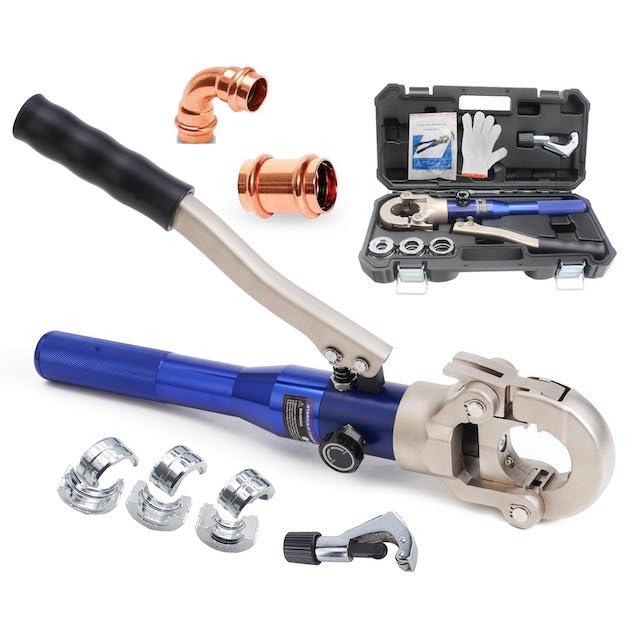
The Ultimate Guide to Copper Pipe Crimping Tool
Introduction
Copper pipe crimping tools have become essential for professionals and DIYers alike when it comes to installing plumbing systems. These tools are designed to create a secure and reliable connection between copper pipes and fittings, ensuring that the plumbing system functions effectively. In this comprehensive guide, we will explore everything you need to know about copper pipe crimping tool, including their benefits, types, usage, and maintenance.
Part 1: Understanding Copper Pipe Crimping Tools
Level 1: What are Copper Pipe Crimping Tools?
Copper pipe crimping tools are devices used to join copper pipes and fittings using a crimping method. The tool compresses a copper ring around the connection, creating a tight seal that prevents leaks and ensures the proper flow of water within the plumbing system. These tools come in various sizes and designs to accommodate different pipe diameters and fittings.
Level 2: Benefits of Using Copper Pipe Crimping Tools
One of the main advantages of using copper pipe crimping tools is the reliability of the connections they create. Unlike traditional soldering methods, crimped connections do not rely on heat, making them suitable for use in areas where open flames are prohibited. Additionally, crimped connections are less likely to develop leaks over time, providing long-term durability and peace of mind for homeowners and professionals.
Part 2: Types of Copper Pipe Crimping Tools
Level 1: Manual Crimping Tools
Manual crimping tools are suitable for occasional use or for smaller plumbing projects. These tools require physical exertion to compress the copper ring around the connection, and while they are cost-effective, they may be less efficient for larger-scale projects.
Level 2: Battery-Powered Crimping Tools
Battery-powered crimping tools for professionals who require a higher level of productivity and precision. These tools are powered by rechargeable batteries, allowing for effortless operation and consistent crimping results. While they may come at a higher price point, the efficiency and convenience they offer make them a worthwhile investment for those in the plumbing industry.
Part 3: Using a Copper Pipe Crimping Tool
Level 1: Preparing the Work Area
Before using a copper pipe crimping tool, it’s essential to prepare the work area by ensuring that the pipes and fittings are clean and free of debris. This will help facilitate a secure and proper connection when crimping.
Level 2: Crimping Process
To use a copper pipe crimping tool, insert the appropriate-sized copper ring onto the pipe, followed by the fitting. Position the tool over the connection and squeeze the handles to compress the ring. The tool will then create a secure crimp, forming a reliable seal between the pipe and fitting.
Part 4: Maintenance of Copper Pipe Crimping Tools
Level 1: Regular Inspections
It’s important to regularly inspect copper pipe crimping tools for signs of wear and tear. Check for any damage to the handles, jaws, and crimping mechanism, and replace any worn parts to ensure the tool continues to function properly.
Level 2: Cleaning and Lubrication
After each use, clean the copper pipe crimping tool to remove any dirt or debris that may have accumulated. Additionally, lubricate the moving parts of the tool to maintain smooth operation and prevent premature wear.
Part 6: Proper Usage and Maintenance of Copper Pipe Crimping Tool
Proper usage and maintenance of a copper pipe crimping tool are essential for ensuring its longevity and effectiveness. To use the tool correctly, it’s crucial to familiarize yourself with the manufacturer’s instructions and recommendations. This may include specific instructions on how to crimp different sizes and types of pipes, as well as guidelines for applying the appropriate amount of force during the crimping process.
Regular maintenance is also key to keeping the tool in good working condition. This may involve keeping the tool clean and free of debris, inspecting it for any signs of wear or damage, and replacing any worn or damaged parts as needed. It’s also important to store the tool properly when not in use, ideally in a clean and dry environment to prevent rust and corrosion.
By using the tool correctly and maintaining it properly, you can ensure that it will continue to perform effectively and reliably for many years to come.
Part 7: Safety Considerations When Using a Copper Pipe Crimping Tool
While copper pipe crimping tools are relatively safe to use when used properly, it’s important to take certain safety precautions to minimize the risk of accidents and injuries. One of the main safety considerations when using a crimping tool is to always wear appropriate personal protective equipment, such as safety goggles and gloves, to protect yourself from any potential hazards.
It’s also important to use the tool in a well-ventilated area to prevent inhaling any fumes or dust during the crimping process. Additionally, make sure to keep your hands and fingers away from the crimping area to avoid accidental injuries.
When using the tool, always follow the manufacturer’s instructions and guidelines to ensure safe and proper operation. This may include using the correct size and type of crimping die for the specific pipe you are working with and applying the appropriate amount of force during the crimping process.
By following these safety considerations, you can minimize the risk of accidents and injuries while using a copper pipe crimping tool.
Part 8: Advantages of Using a Copper Pipe Crimping Tool
There are several advantages to using a copper pipe crimping tool for joining copper pipes. One of the main benefits is the speed and ease of the crimping process, which allows for quick and efficient installation of piping systems. This can be especially advantageous in larger plumbing or HVAC projects where time is of the essence.
Another advantage of using a crimping tool is the reliability and durability of the connections it creates. Their strength and resistance to leaks, are making them a popular choice for many plumbing and HVAC applications. Additionally, crimped connections are also less prone to corrosion and other types of deterioration over time, which can further increase the longevity of the piping system.
Copper pipe crimping tools are also relatively compact and portable, making them easy to use in tight spaces and on-the-go installations. This can be particularly beneficial for plumbers and HVAC technicians who need to work in confined areas or on various job sites.
Overall, the advantages of using a copper pipe crimping tool make it a valuable and versatile tool for joining copper pipes in a wide range of applications.
Conclusion
Using a copper pipe crimping tool is relatively straightforward. The tool with a specific crimping jaw that matches the size and type of the pipe and fitting. Once the jaw is in place, the user simply needs to apply the appropriate amount of force to crimp the pipe and fitting together. This creates a secure and watertight seal that will prevent leaks and ensure the integrity of the piping system.
In conclusion, a copper pipe crimping tool is an essential tool for anyone working with copper piping systems. These tools are designed to make the process of crimping copper pipes fast, easy, and reliable, and are available in manual, battery-powered, and hydraulic options. By choosing the right tool for the job, users can ensure that their copper piping systems are installed securely and efficiently.
In conclusion, copper pipe crimping tools are a valuable asset for anyone involved in plumbing projects, offering a reliable and efficient method for creating secure connections. By understanding the different types of crimping tools, how to use them, and how to maintain them, you can ensure that your plumbing system will function effectively for years to come. Whether you’re a professional plumber or a DIY enthusiast, investing in a quality copper pipe crimping tool is a decision that will pay off in the long run.
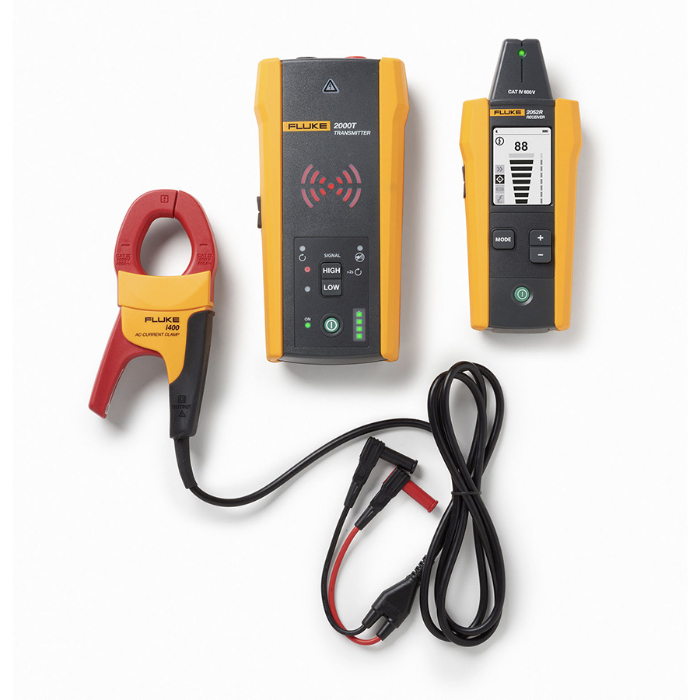
Unraveling the Mysteries of Wire Tracer Tool: A Complete Guide
Introduction
The wire tracer tool is an essential device for electricians, technicians, and DIY enthusiasts who need to trace electrical wires within walls, ceilings, and floors. This innovative tool is designed to help locate wires from a distance, identify line voltage, and trace non-energized and open (broken) wires. In this comprehensive guide, we will explore the functionality, features, and benefits of wire tracer tools, as well as how to use them effectively.
Part 1: Understanding the Basics of Wire Tracer Tool
Level 1: What is a Wire Tracer Tool?
A wire tracer tool is a handheld device that uses a transmitter and receiver to locate and trace electrical wires. The transmitter applies a signal to the wire being traced, while the receiver detects the signal and provides an audible and visual indication of its presence.
Level 2: How Does a Wire Tracer Tool Work?
The transmitter sends a signal through the wire, which can be detected by the receiver even through walls, floors, and ceilings. The receiver picks up the signal and indicates the location and direction of the wire, making it easier to trace and identify.
Part 2: The Different Types of Wire Tracer Tools
Level 1: Types of Wire Tracer Tools
There are various types of wire tracer tools available, including basic models for residential use and advanced models for professional electricians. Some models may also offer additional features such as adjustable sensitivity, dual transmitter/receiver capabilities, and LCD displays.
Level 2: Choosing the Right Wire Tracer Tool for Your Needs
When selecting a wire tracer tool, consider the type of wiring you will be working with, the distance you need to trace, and any specific features that would benefit your specific applications. Professional electricians may require a more advanced model, while homeowners and DIYers can opt for a basic wire tracer tool.
Part 3: Features and Functions of Wire Tracer Tools
Level 1: Key Features of Wire Tracer Tools
Wire tracer tools often come with a variety of features such as adjustable sensitivity, multiple signal modes, LED display, and audible alerts. Some models may also offer the ability to detect and trace non-energized wires, making them versatile for a range of applications.
Level 2: Functions of a Wire Tracer Tool
The primary function of a wire tracer tool is to locate and trace electrical wires, including both energized and non-energized lines. Additionally, some tools can identify the presence of line voltage and locate potential breaks or faults in the wiring.
Part 4: Benefits of Using a Wire Tracer Tool
Level 1: Advantages of Using a Wire Tracer Tool
Wire tracer tools offer numerous benefits, including time-saving capabilities, increased efficiency in wiring projects, and the ability to avoid unnecessary damage to walls and other structures when tracing wires. They also provide a safer and more precise alternative to manual wire tracing methods.
Level 2: Applications of Wire Tracer Tools
We can use wire tracer tools in residential, commercial, and industrial settings for tasks such as locating and troubleshooting electrical circuits. Identifying wire paths in complex installations. And mapping out wiring schematics for renovation or repair projects.
Part 5: How to Use a Wire Tracer Tool Effectively
Level 1: Preparation and Safety Measures
Before using a wire tracer tool, it’s important to familiarize yourself with the specific model’s user manual, wear appropriate safety gear, and ensure that the area is clear of any hazards. Additionally, verify that the tool’s batteries are fully charged and that the transmitter and receiver are functioning properly.
Level 2: Step-by-Step Guide to Using a Wire Tracer Tool
To use a wire tracer tool effectively, follow these steps: 1) Connect the transmitter to the wire to be traced, 2) Turn on the transmitter and adjust the signal strength, 3) Use the receiver to trace the signal and locate the wire, 4) Mark the wire’s path for future reference, and 5) Turn off the transmitter and receiver after use.
Part 6: Benefits of Using a Wire Tracer Tool
A wire tracer tool offers numerous benefits to electricians and DIY enthusiasts. One of the main advantages is its ability to accurately and quickly identify wires and cables within walls, floors, and ceilings. This can save a significant amount of time and effort compared to using traditional methods such as trial and error or visual inspection.
Another benefit of using a wire tracer tool is its ability to detect faults and breaks in wires, which can be difficult to identify without the right tool. This can be particularly useful when troubleshooting electrical problems, as it helps to pinpoint the exact location of the issue, leading to faster and more efficient repairs.
Furthermore, wire tracer tools can also help prevent damage to existing wires during construction or renovation projects. By precisely identifying the location of wires, users can avoid accidentally drilling or nailing into them, which can cause costly and potentially dangerous damage.
Additionally, wire tracer tools are versatile and we can use them in various applications, from residential electrical work to industrial and commercial projects. They are user-friendly and require minimal training to operate effectively. Making them a valuable tool for professionals and DIYers alike.
In summary, the benefits of using a wire tracer tool include saving time and effort, locating faults and breaks in wires, preventing damage to existing wires, and its versatility in various applications. These advantages make it an indispensable tool for anyone working with electrical systems.
Part 7: Types of Wire Tracer Tools
Wire tracer tools come in a variety of types, each designed for specific purposes and applications. Some of the most common types of wire tracer tools include:
- Tone and Probe Kits: These kits consist of a tone generator and a probe, and they can identify and trace wires in electrical systems. The tone generator emits a signal that can be detected by the probe. Allowing users to follow the path of the wire and locate its endpoint.
- Cable Tracers: These tools can trace the path of cables and wires within walls, floors, and ceilings. They typically use advanced technology such as digital signal processing to accurately identify and map out the route of the cable, making them useful for both residential and commercial applications.
- Circuit Tracers: Circuit tracers can locate and identify circuits within electrical panels, outlets, and junction boxes. They can help electricians and contractors quickly and accurately trace the path of electrical circuits, making them essential for troubleshooting and maintenance tasks.
- Underground Wire Tracers: These tools are specifically for locating buried wires and cables, such as those used for outdoor lighting, underground utilities, and irrigation systems. They use specialized techniques such as ground-penetrating radar to detect and map out the location of buried wires, making them valuable for landscaping and construction projects.
In conclusion, wire tracer tools come in various types, each offering unique features and capabilities to suit different applications and needs. Understanding the different types of wire tracers tools can help users choose the right tool for their specific requirements.
Conclusion
Wire tracer tool is are indispensable for accurately locating, tracing, and identifying electrical wires. With the ability to save time, increase efficiency, and provide a safer alternative to manual wire tracing methods, these tools are a valuable asset for electricians, technicians, and DIY enthusiasts. By understanding the basics, types, features, benefits, and proper usage of wire tracer tools, you can confidently tackle wiring projects with precision and ease.
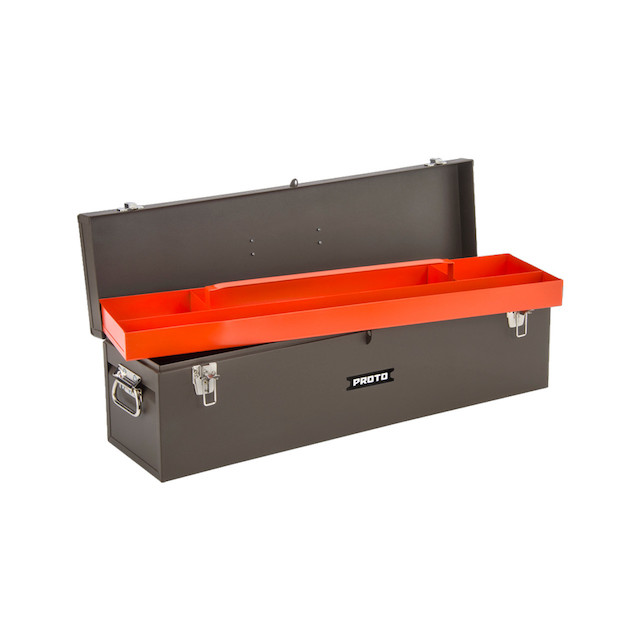
The Guide to Proto Tool Box: Everything You Need to Know
Introduction
Proto is a leading brand in the tool industry, known for its high-quality and durable tool boxes. Whether you are a professional tradesperson, DIY enthusiast, or just someone who needs a reliable storage solution for their tools, a Proto tool box is a fantastic choice. In this guide, we will explore everything you need to know about Proto tool box, from their features and benefits to how to choose the right one for your needs.
Part 1: Overview of Proto Tool Boxes
Proto tool boxes are designed with durability and functionality in mind. They are made from high-quality materials such as steel, aluminum, and plastic, and feature reinforced corners and hinges for added strength. These tool boxes come in a variety of sizes and styles to accommodate different tool collections.
Part 2: Features and Benefits of Proto Tool Boxes
Proto tool boxes are packed with features that make them a great choice for anyone in need of reliable tool storage. Some of the key features include heavy-duty construction, secure locking mechanisms, and easy portability. Additionally, Proto tool boxes are designed to withstand the rigors of everyday use. Ensuring that your tools stay safe, secure, and organized at all times.
Part 3: Choosing the Right Proto Tool Box
When choosing a Proto tool box, it is important to consider factors such as size, storage capacity, and portability. If you have a large collection of tools, you may want to opt for a rolling cabinet with multiple drawers and compartments. On the other hand, if you only need to store a few essential tools, a smaller handheld box may be sufficient. It is also essential to consider the type of tools you have and how often you will need to access them.
Part 4: Maintenance and Care of Proto Tool Boxes
To ensure that your Proto tool box remains in top condition. It is essential to perform regular maintenance and care. This includes keeping the box clean and free of debris. And lubricating hinges and locks, and checking for any signs of wear and tear. By taking care of your tool box, you can extend its lifespan and ensure that your tools remain safe and organized.
Part 5: Real-Life Applications of Proto Tool Boxes
Proto tool boxes are commonly used in various industries, including automotive, construction, and manufacturing. Their durability, portability, and secure storage make them a popular choice for professionals. Whether you are a mechanic, electrician, or carpenter, a Proto tool box can help you keep your tools organized and accessible, ultimately improving your efficiency and productivity.

Part 6: Maintaining Your Proto Tool Box
To keep your Proto tool box in top condition, regular maintenance is essential. Here are some tips to help you keep your tool box in prime working order:
- Keep it clean: Wipe down your tool box after each use to prevent dirt and dust from building up. Regularly vacuum the interior and remove any debris to prevent damage to your tools.
- Lubricate the hinges and latches: To ensure smooth operation, lubricate the hinges and latches of your tool box with a silicone-based lubricant. This will prevent them from rusting or becoming stiff over time.
- Check for rust: Inspect your tool box regularly for any signs of rust or corrosion. If you spot any, use a rust remover and a wire brush to clean the affected areas, and then apply a rust-inhibiting primer and paint to prevent further damage.
- Inspect the handles and wheels: Check the handles and wheels of your tool box for any signs of wear and tear. Replace any worn or damaged parts to prevent accidents and make transporting your tools easier.
- Properly store your tools: Storing your tools properly will not only keep your tool box organized, but it will also prevent unnecessary wear and tear on your tools. Use foam inserts or tool organizers to keep everything in place and prevent damage during transport.
By properly maintaining your Proto tool box, you can ensure that it will provide you with reliable service for years to come.
Part 7: Upgrading Your Proto Tool Box
If you find that your Proto tool box is not meeting your needs or you simply want to expand its functionality. There are several ways you can upgrade it. Here are some popular upgrades you can make to your Proto tool box:
- Add more storage: If you find that your current tool box is running out of space, consider adding extra storage options such as a top chest, side cabinet, or drawer liners. This will allow you to organize and store your tools more efficiently.
- Customize the interior: Use foam inserts or organizational trays to create custom storage solutions for your tools. This will not only keep your tools secure during transport but also make them easier to find when you need them.
- Install a power strip: If you use power tools frequently, consider adding a power strip to your tool box. This will allow you to plug in and charge your tools directly from your tool box. Saving you time and keeping your work area tidy.
- Upgrade the locks: If security is a concern, consider upgrading the locks on your tool box to a higher-quality option. This will provide added protection for your tools and give you peace of mind when storing them.
- Customize the exterior: Add a personal touch to your Proto tool box by customizing the exterior with decals, paint, or a logo. This will not only make your tool box stand out but also help to prevent theft by making it easily recognizable.
By making these upgrades, you can customize your Proto tool box to better suit your specific needs. It will ensure that it continues to serve you well for years to come.
Part 8: Transporting Your Proto Tool Box Safely
Whether you’re moving your tools to a new job site or simply reorganizing your workspace. It’s important to transport your Proto tool box safely to prevent damage to your tools and the tool box itself. Here are some tips for safe transportation:
- Secure the contents: Before moving your tool box, make sure that all the drawers and lids are securely closed and locked. Use bungee cords or ratchet straps to further secure the contents and prevent them from shifting during transport.
- Use the right equipment: If your tool box is too heavy to lift and move on your own, use a dolly, hand truck, or forklift to transport it safely. Make sure that the equipment you use is rated for the weight of your tool box and its contents.
- Lift with caution: If you need to lift your tool box, use proper lifting techniques to prevent injury. Bend your knees and keep your back straight, and use your legs to lift the box rather than your back.
- Protect the exterior: Use a durable tool box cover or moving blanket to protect the exterior of your tool box from scratches and dents during transport. This will help to preserve the appearance of your tool box and prevent unnecessary damage.
- Secure it in transit: If you’re transporting your tool box in a vehicle, use tie-down straps to secure it in place and prevent it from sliding around.
By following these tips, you can transport your Proto tool box safely and ensure that both the box and your tools.
Conclusion
Proto tool box is a reliable and durable storage solution for any tool collection. Whether you are a professional tradesperson or a DIY enthusiast. Investing in a Proto tool box can help keep your tools organized, secure, and easily accessible. By understanding the features and benefits of Proto tool boxes and how to choose the right one for your needs. You can ensure that your tools remain in top condition for years to come. With proper maintenance and care, a Proto tool box can be an invaluable addition to your arsenal of tools.
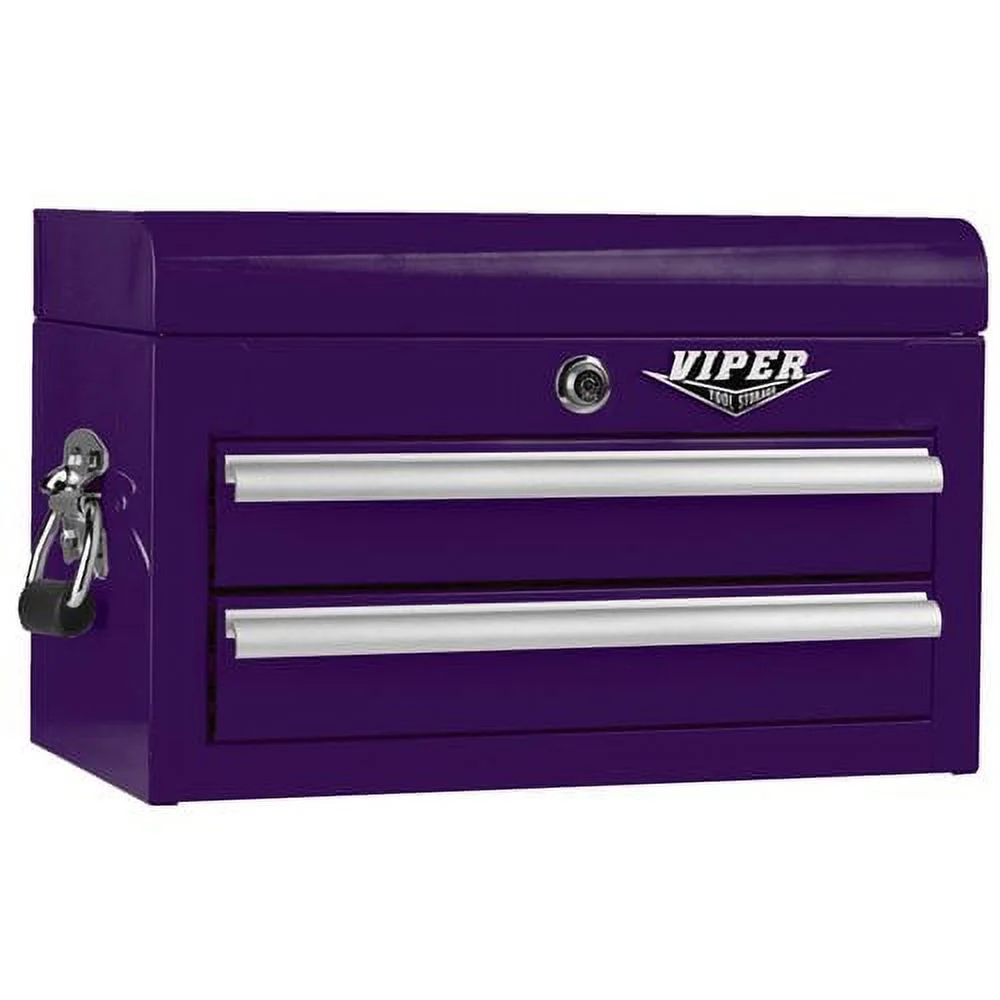
The Purple Tool Box: A Must-Have for Every DIY Enthusiast
Introduction
In the world of DIY, having the right tools is essential for getting the job done. Whether you’re a professional tradesperson or a hobbyist, a tool box is a crucial component of any toolkit. And if you’re looking for a tool box that not only serves its purpose but also adds a pop of color to your workspace, a purple tool box could be the perfect choice for you. In this comprehensive guide, we’ll explore the benefits of having a purple tool box, the different types available, and tips for choosing the best one for your needs.
Part 1: The Benefits of a Purple Tool Box
Level 1: Aesthetics
The first and most obvious benefit of a purple tool box is its aesthetic appeal. While traditional tool boxes often come in shades of grey, black, or red, a purple tool box can add a much-needed splash of color to your workspace. Whether you’re working in a garage, a workshop, or even just in your home, a pop of purple can make your tools stand out and bring a sense of vibrancy to your surroundings.
Level 2: Organization
Beyond aesthetics, a purple tool box can also help with organization. By having a designated color for your tools, it becomes easier to locate and identify them within your toolbox. This can save you time and frustration, especially when you’re in the middle of a project and need to find a specific tool quickly.
Part 2: Types of Purple Tool Boxes
Level 1: Portable Tool Boxes
Portable tool boxes are a popular choice for those who need to take their tools on the go. These tool boxes often feature a sturdy handle and multiple compartments for storing different types of tools. A purple portable tool box can add a stylish and practical touch to your toolkit while providing the convenience of easy transport.
Level 2: Chest Tool Boxes
For those with a larger collection of tools, a chest tool box may be the best option. These tool boxes typically feature multiple drawers and compartments for organizing and storing various tools. A purple chest tool box not only provides ample storage space but also adds a bold statement to your workspace.
Part 3: Choosing the Right Purple Tool Box for You
Level 1: Size and Capacity
When choosing a purple tool box, it’s important to consider the size and capacity that will best suit your needs. If you have a small collection of tools, a portable tool box may be sufficient, while those with a larger collection may require a chest tool box for adequate storage.
Level 2: Durability and Material
The durability and material of a purple tool box are also crucial factors to consider. Look for a tool box made of high-quality materials such as steel, aluminum, or heavy-duty plastic to ensure that it can withstand the wear and tear of regular use.
Part 4: Tips for Maintaining Your Purple Tool Box
Level 1: Regular Cleaning
To keep your purple tool box in top condition, it’s essential to regularly clean and maintain it. Wipe down the exterior and interior of the tool box to remove dust, dirt, and any spilled liquids. This will not only keep your tool box looking its best but also help prevent rust and corrosion on your tools.
Level 2: Proper Storage
In addition to cleaning, proper storage is key to maintaining your purple tool box. Store it in a dry, cool place away from direct sunlight to prevent fading of the color and potential damage to the tools inside. Additionally, consider investing in drawer liners and tool organizers to keep your tools neatly arranged and prevent them from shifting during transport.
Part 5: Where to Buy Purple Tool Boxes
Level 1: Online Retailers
Many online retailers offer a wide selection of purple tool boxes in various styles and sizes. Websites such as Amazon, Home Depot, and Lowe’s are popular destinations for finding the perfect purple tool box to fit your needs.
Level 2: Specialty Stores
If you prefer to see and touch a tool box before making a purchase, consider visiting specialty stores that carry a range of tool storage solutions. These stores may also have knowledgeable staff who can help you choose the right purple tool box for your specific needs.
Organization and Versatility
Level 1: Organization and Versatility
A purple tool box offers excellent organization for all your tools, with multiple compartments, drawers, and trays to keep everything in its place. This makes it easy to find what you need when you need it, saving you time and frustration. Additionally, many purple tool boxes come with adjustable dividers and shelves, allowing you to customize the interior to suit your specific needs.
Level 2: Mobility and Durability
In addition to keeping your tools organized, a purple tool box also provides mobility and durability. Many models feature sturdy wheels and a comfortable handle for easy transportation, whether you’re moving it around your garage or bringing it to a job site. Plus, the durable construction ensures that your tools stay protected and secure, even in rough conditions.
Stylish and Unique
Level 1: Stylish and Unique
A purple tool box adds a pop of color and personality to your workspace, making it stand out from standard black and silver tool boxes. Whether you’re a professional tradesperson or a DIY enthusiast, a purple tool box allows you to express your individuality and sense of style.
Level 2: Security and Theft Prevention
Another benefit of a purple tool box is its ability to deter theft and keep your tools secure. Thieves are less likely to target a brightly colored tool box, as it’s more conspicuous and easily recognizable. This can provide added peace of mind, especially if you need to leave your tools unattended at a job site or in a public space.
Customization and Personalization
Level 1: Customization and Personalization
Many purple tool boxes offer the option of customizing the exterior with decals, stickers, or other personal touches. This allows you to make your tool box truly your own and reflects your unique sense of style and identity. You can also add additional accessories, such as cup holders or work lights, to further personalize your tool box to suit your needs.
Level 2: Value and Investment
Investing in a high-quality purple tool box is a smart investment in the long-term care of your tools. By keeping your tools organized, secure, and protected, a purple tool box can extend the lifespan of your tools and save you money in replacement costs. Additionally, a well-organized and stylish tool box can also improve your overall productivity and efficiency, making it a valuable addition to your workspace.
Conclusion
A purple tool box is not only a functional and practical addition to your toolkit, but it can also add a touch of personality to your workspace. With its benefits in aesthetics, organization, and portability, a purple tool box is a must-have for every DIY enthusiast.
Some tool boxes even have removable trays or compartments, allowing you to customize the layout to fit your specific needs. This versatility and portability make a purple tool box a valuable asset for any DIY enthusiast or professional tradesperson. By considering the different types available, choosing the right one for your needs, and maintaining it properly, you can ensure that your purple tool box remains a valuable and stylish tool storage solution for years to come. So why settle for a boring old tool box when you can make a statement with a vibrant purple one?
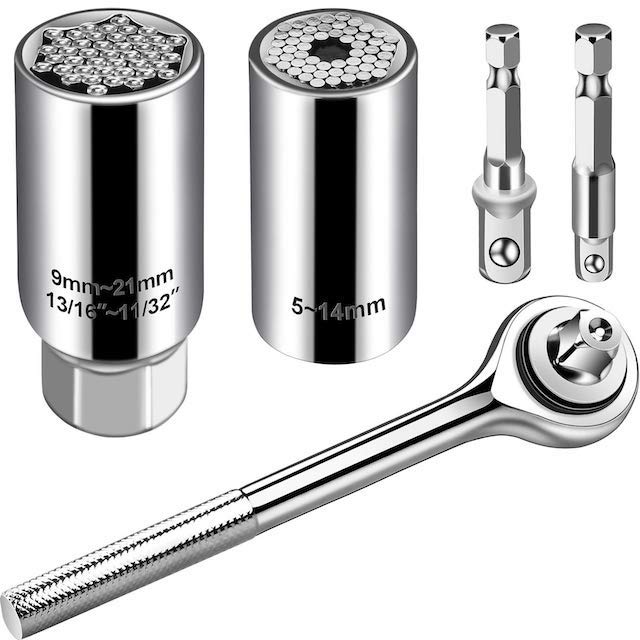
The Ultimate Guide to Socket Tool: Everything You Need to Know
Introduction
A socket tool, also known as a socket wrench, is a versatile hand tool used for tightening or loosening bolts and nuts. It consists of a handle and a socket, which is a hollow cylinder with a six-sided opening on one end that fits onto the head of a bolt or nut. The handle and socket are connected by a ratcheting mechanism that allows the socket to turn in one direction while the handle remains stationary, making it easier to apply torque to the fastener.
Socket tools are essential for any DIY enthusiast or professional mechanic. These versatile tools come in a variety of sizes and types, making them an indispensable part of any toolkit. Whether you’re working on your car, assembling furniture, or tackling home improvement projects, socket tools are a must-have. In this comprehensive guide, we’ll cover everything you need to know about socket tools, including their different types, uses, and maintenance tips.
Part 1: Types of Socket Tools
Level 1: Standard Sockets
Standard sockets are the most common type of socket tool and come in both metric and SAE (Society of Automotive Engineers) sizes. They are typically hexagonal in shape and are designed to fit on a ratcheting handle for turning bolts and nuts.
Level 2: Impact Sockets
Impact sockets are specifically designed to withstand the high torque and force generated by impact wrenches. They are made from toughened steel and have a thicker wall to handle the extra stress. Impact sockets are essential for automotive or industrial applications.
Part 2: Socket Drive Sizes
Level 1: 1/4-inch Drive
The 1/4-inch drive socket is the smallest and is ideal for working on small electronics, bicycles, and motorcycles. These sockets are perfect for delicate and precise work.
Level 2: 3/4-inch Drive
The 3/4-inch drive socket is the largest and is used for heavy-duty and industrial applications. These sockets are capable of handling large bolts and nuts, making them essential for construction and machinery maintenance.
Part 3: Uses of Socket Tools
Level 1: Automotive Repairs
Socket tools are a crucial part of any automotive toolkit, used for tasks such as changing oil, replacing spark plugs, and removing engine components. They are essential for both DIY car maintenance and professional automotive repairs.
Level 2: Home Improvement Projects
From assembling furniture to tightening loose bolts, socket tools are indispensable for various home improvement projects. They are ideal for tasks such as installing shelves, hanging light fixtures, and repairing appliances.
Part 4: Maintenance and Care
Level 1: Cleaning
Regular cleaning of socket tools is crucial for ensuring their longevity and performance. Use a solvent to remove grease and dirt from the sockets, and ensure they are thoroughly dried before use.
Level 2: Storage
Proper storage is essential for preventing rust and damage to socket tools. Organize them in a toolbox or chest, and consider using socket rail organizers to keep them neatly arranged and easily accessible.
Part 5: Tips for Choosing the Right Socket Tools
Level 1: Quality
Invest in high-quality socket tools made from durable materials such as chrome vanadium steel. Quality tools will last longer and provide better performance.
Level 2: Compatibility
Consider the types of projects you’ll be working on and choose socket tools that are compatible with your existing ratchets and wrenches. Ensure they are the correct size for the nuts and bolts you’ll be working with.
Part 6: Types of Socket Tools
Level 1: Types of Socket Tools
There are various types of socket tools available, designed for specific tasks and applications. Some of the most common types include:
- Impact sockets: These are designed to withstand high levels of torque and are commonly used with impact wrenches or air tools. They are usually made of chrome molybdenum steel for durability.
- Spark plug sockets: These are specifically designed for removing and installing spark plugs. They often feature a rubber insert to securely hold the spark plug in place during installation.
Level 2: Specialized Socket Tool Sets
Many socket tool sets are designed for specialized purposes, such as:
- Motorcycle tool sets: These sets typically include a range of socket sizes and other tools specifically designed for working on motorcycles, such as narrow profile sockets for tight spaces and specialized bits for motorcycle maintenance.
- Emergency roadside kits: These sets often include a compact selection of socket tools, along with other essential tools and items, to help with common vehicle repairs and emergencies while on the road.
Part 7: Specialty Socket Tools
Level 1: Specialty Socket Tools
In addition to standard socket sets, there are also specialty socket tools available for specific tasks. Some examples include:
- Torque limiting sockets: These sockets are designed to limit the amount of torque applied to a fastener, preventing over-tightening and potential damage. They are often used in critical applications where precise torque control is necessary.
- Swivel sockets: These sockets have a swiveling head that allows for greater flexibility and access to fasteners in tight or awkward spaces, making them ideal for automotive and machinery repairs.
Level 2: Socket Tool Accessories
There are also a variety of accessories available for socket tools, such as:
- Socket rails or trays: These are convenient storage solutions for organizing and transporting sockets in a workshop or garage. They typically feature clips or posts to securely hold individual sockets in place.
- Universal joints: These attachments allow for increased flexibility and angle adaptability when using socket tools, enabling access to fasteners that are not in a straight line with the tool’s handle.
Part 8: Advancements in Socket Tool Technology
Level 1: Advancements in Socket Tool Technology
In recent years, advancements in materials and design have led to improvements in socket tool performance and durability. Some of the latest advancements include:
- High-performance alloy steels: Manufacturers are developing new alloy steels with enhanced strength and wear resistance, resulting in sockets that can withstand higher torque levels and last longer under heavy use.
- Anti-corrosion coatings: Some socket tools now feature specialized coatings that provide protection against rust and corrosion, extending their lifespan in harsh working environments.
Level 2: Ergonomic Socket Tool Design
Modern socket tools with ergonomic features to improve user comfort and reduce fatigue. These design elements may include:
- Cushioned handles: Many socket wrenches now incorporate ergonomic handles with cushioned grips to provide more comfortable and secure handling during use, reducing hand fatigue and improving control.
- Quick-release mechanisms: Some socket wrench designs feature quick-release mechanisms that allow for easy and rapid socket changes, reducing the need for manual socket removal and speeding up workflow.
Conclusion
Extension bars can extend the reach of the ratchet wrench. And allowing it to access bolts or nuts located in tight or hard-to-reach spaces. Universal joints provide flexibility in the angle, making it easier to reach fasteners at odd angles. Spark plug sockets are specifically for removing and installing spark plugs, and impact sockets.
Overall, socket tools are essential for any mechanic, handyman, or DIY enthusiast. They provide a reliable and efficient way to tackle a wide range of fastening tasks. Making them an indispensable part of any tool collection. Socket tools are an essential part of any toolkit, offering versatility and functionality for a wide range of tasks. By understanding the different types, sizes, and uses of socket tools, as well as how to properly maintain and choose the right tools, you can ensure you have the right equipment for any job. Whether you’re a professional tradesperson or a DIY enthusiast, socket tools are a must-have for any workshop or garage.
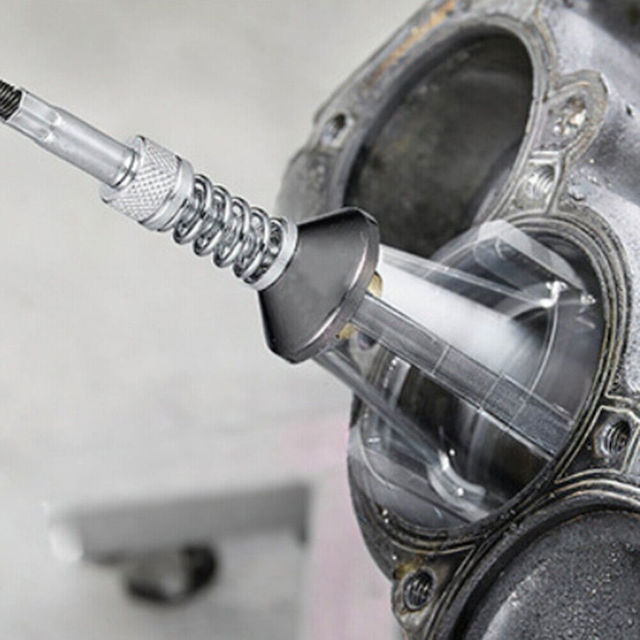
The Ultimate Guide to Honing Tool: Everything You Need to Know
Introduction
When it comes to maintaining sharp edges on knives, scissors, garden tools, and other sharp objects, honing tools are essential for keeping them in top condition. Whether you’re a professional chef, avid gardener, or DIY enthusiast, a quality honing tool is an indispensable addition to your toolkit. We will explore the different types of honing tools available, how to use them effectively. And we will delve into the importance of regular maintenance for sharp, efficient tools.
Another popular type of honing tool is the honing rod, also known as a sharpening steel. This tool is typically made of a hard, smooth steel rod with a handle. It is used to realign and straighten the cutting edge of a blade rather than removing material like a sharpening stone. Honing rods are particularly useful for maintaining the sharpness of knives that are used frequently. They help to remove any burrs or irregularities that may develop on the edge over time.
In addition to sharpening stones and honing rods, there are also specialized honing tools such as diamond files, ceramic sharpeners, and sharpening systems that use abrasive belts or discs. These tools offer more advanced sharpening techniques and are often used in professional settings or by those who require extremely sharp and precise edges for their cutting tools.
Part 1: Understanding Honing Tools
It’s essential to use the right honing tool and technique for each specific blade, as improper sharpening can damage the blade and reduce its effectiveness. Regular honing and maintenance of cutting tools are crucial to ensure their longevity and optimal performance, and a high-quality honing tool is essential for achieving and maintaining a sharp, precise cutting edge.
Level 1: What is a Honing Tool?
A honing tool is a handheld tool designed to sharpen and polish the edge of a blade. There are various types of honing tools, including sharpening stones, honing rods, and sharpening steels, each with its own unique benefits and applications.
Level 2: Types of Honing Tools
- Sharpening Stones: Also known as whetstones, sharpening stones come in a variety of materials, including natural stones like Arkansas, synthetic stones like aluminum oxide, and diamond stones. They are used to grind and hone the edge of a blade to a precise sharpness.
- Honing Rods: Honing rods, also referred to as sharpening rods or sharpening steels, are long, cylindrical rods typically made of steel or ceramic. They are used to realign the edge of a blade and remove any burrs or imperfections.
Part 2: Choosing the Right Honing Tool
There are several different types of honing tools available, including handheld sharpening stones, honing rods, and guided sharpening systems. Each type of honing tool for specific applications can sharpen a wide range of blades and cutting tools. Including kitchen knives, woodworking tools, and sporting knives.
Using a honing tool requires a certain level of skill and technique, as it is important to maintain the proper angle and pressure when sharpening the blade. With practice and patience, however, honing tools can significantly improve the performance and longevity of blades, making them an essential tool for anyone who regularly works with cutting tools. Honing tool is a valuable addition to any tool kit, as they offer a convenient and effective way to keep blades sharp and ready for use.
Level 1: Factors to Consider
When selecting a honing tool, there are several factors to consider, including the type of blade you will be sharpening, the level of sharpening required, and your own personal preferences and experience with honing tools.
Level 2: Honing Tool Maintenance
Proper maintenance of your honing tools is essential to ensure their effectiveness and longevity. Regularly cleaning and storing your honing tools correctly will help to maintain their sharpening capabilities and prevent rust or damage.
Part 3: How to Use Honing Tools
Level 1: Using a Sharpening Stone
Using a sharpening stone requires a certain level of skill and technique, as it involves precise movements to achieve the desired edge. It’s important to hold the blade at the correct angle and apply consistent pressure while passing the blade along the surface of the stone.
Level 2: Using a Honing Rod
Honing rods are generally more user-friendly and forgiving than sharpening stones, making them a popular choice for beginners. To use a honing rod, simply hold the rod firmly in one hand and the blade in the other, then swipe the blade along the length of the rod at a consistent angle and pressure.
Part 4: The Importance of Honing Tools
Level 1: Maintaining Blade Sharpness
Regular use of honing tools helps to maintain the sharpness of blades. Reducing the need for frequent, intensive sharpening and extending the lifespan of the blade.
Level 2: Safety and Efficiency
A sharp blade is not only safer to use but also more efficient. Allowing for cleaner cuts and smoother, more precise motions.
Part 5: Honing Tools for Different Applications
Level 1: Kitchen Knives
Honing tools are essential for maintaining the sharpness of kitchen knives, ensuring they remain effective for slicing, dicing, and chopping a variety of ingredients.
Level 2: Gardening Tools
Maintaining the sharpness of pruning shears, hedge trimmers, and other garden tools with honing tools is crucial for clean, precise cuts and healthy plant maintenance.
Benefits of Using a 9-Honing Tool
- Improved Precision: Using a 9-honing tool allows for greater precision when sharpening blades and tools. Resulting in better performance and longer tool life.
- Time Savings: The 9-honing tool can sharpen and complete tasks more quickly and efficiently. And saving time and enabling users to focus on other important tasks.
Types of 9-Honing Tools
- Sharpening Stones: 9-honing tools may include various types of sharpening stones, such as oil stones, water stones, and diamond stones. Each offering different levels of abrasiveness for achieving the desired sharpness.
- Guided Sharpening Systems: Some 9-honing tools come with guided sharpening systems that provide a consistent angle for sharpening. Making it easier for users to achieve optimal results without the need for manual precision.
Maintenance and Care for 9-Honing Tools
- Cleaning and Storage: Regular cleaning of the sharpening surfaces and proper storage of the 9-honing tool can help maintain its effectiveness and prolong its lifespan.
- Lubrication: Some 9-honing tools may require lubrication with oil or water to ensure smooth sharpening and prevent excessive wear on the sharpening surfaces. Following manufacturer recommendations for lubrication can help prolong the tool’s effectiveness.
Conclusion
Honing tool is an essential addition to any tool collection. Offering a simple yet effective way to maintain the sharpness and efficiency of a variety of blades. Understanding the different types of honing tools available, how to choose the right one, and utilizing proper maintenance and usage techniques. You can ensure your tools remain sharp and reliable for years to come. Whether for culinary, gardening, or general DIY purposes, honing tools are a valuable investment in the longevity and effectiveness of your blades.
A honing tool is an essential instrument. It can sharpen and refine the edge of a variety of cutting tools. Including knives, chisels, razors, and scissors. The process of honing involves the removal of small amounts of material from the blade’s edge. Resulting in a sharper and more precise cutting edge.
There are several types of honing tools available, each designed for specific purposes and materials. One of the most common and versatile honing tools is the sharpening stone. They use the natural or synthetic materials such as whetstone, ceramic, or diamond. Sharpening stones come in a variety of grits, ranging from coarse to fine. Allowing for different levels of sharpening depending on the blade’s condition and the desired level of sharpness.
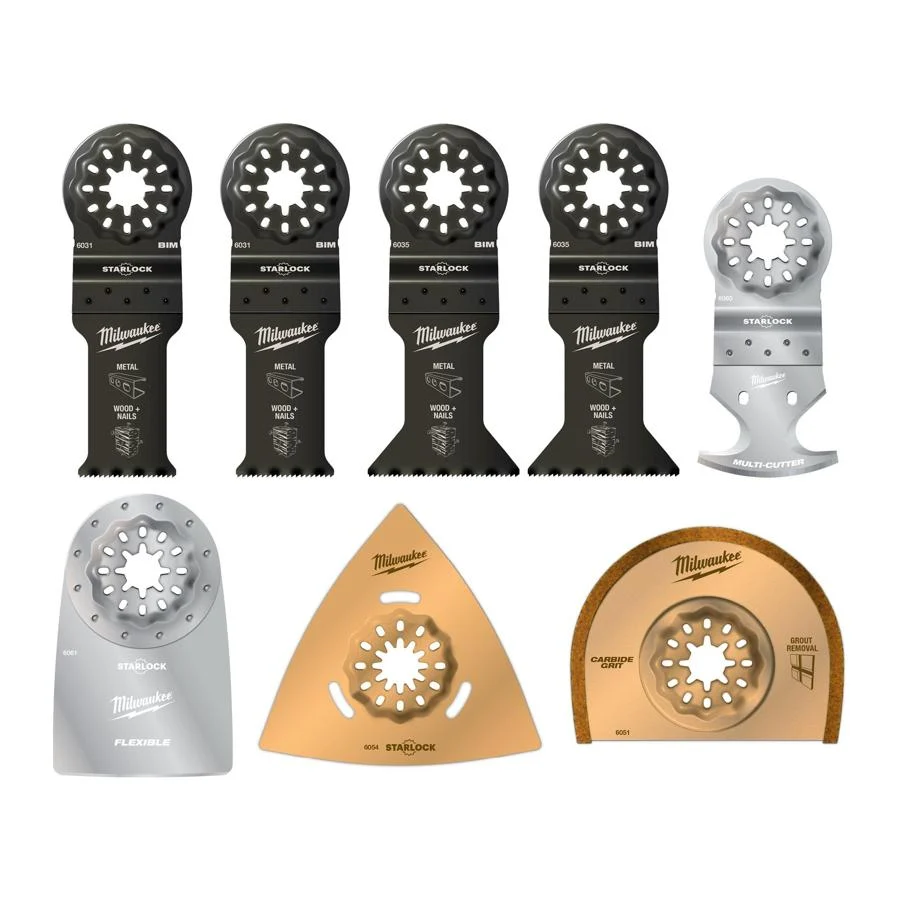
The Ultimate Guide to Milwaukee Multi Tool Blades
Introduction
Milwaukee multi tool blades are crucial components of any DIY enthusiast or professional tradesperson’s toolkit. These versatile accessories are designed to handle a wide range of cutting and slicing tasks, making them essential for various projects. Whether you’re working on woodworking, metalwork, or general home repairs, having the right Milwaukee blades can make all the difference in achieving precise and efficient results.
Part 1: Understanding Milwaukee Multi Tool Blades
The quality of Milwaukee blades is unmatched, thanks to the use of high-quality materials and advanced manufacturing processeses. The blades are constructed from premium steel and feature precision-ground teeth for clean and precise cuts. This level of quality ensures that the blades will last longer and perform better than cheaper, low-quality alternatives.
In addition to their durability, Milwaukee blades are also designed for user convenience and safety. Many of the blades feature color-coding and labeling to make it easy to identify the right blade for the job. They also often come with quick-change systems for fast and easy blade changes, reducing downtime and increasing productivity.
Level 1: Milwaukee multi tool blades are accessories designed to be compatible with Milwaukee multi tools, such as the M18 and M12 series. These blades come in various shapes, sizes, and materials to cater to different cutting needs. From wood and metal cutting to grout removal and scraping, there’s a Milwaukee multi tool blade for every application.
Level 2: The blades are typically made from high-quality materials such as high-speed steel, bi-metal, and carbide, ensuring durability and long-lasting performance. They feature different tooth patterns and edge designs to cater to specific cutting requirements, such as fine precision cutting, aggressive plunge cutting, and rapid material removal.
Part 2: Types of Milwaukee Multi Tool Blades
Milwaukee blades are an excellent choice for anyone in need of high-quality, versatile cutting tools. Whether you are a professional contractor, a hobbyist, or a homeowner tackling DIY projects, these blades will help you get the job done right the first time. With their exceptional performance, durability, and ease of use, Milwaukee blades are a valuable investment for any workshop or tool collection.
Level 1: Milwaukee multi tool blades come in different types to accommodate specific cutting tasks. For woodworking applications, there are precision woodcutting blades, fine-tooth blades for detailed work, and Japanese-tooth blades for fast and clean cuts.
Level 2: Metal cutting blades are designed to tackle materials like steel, aluminum, and copper, with bi-metal and carbide teeth for added durability and aggressive cutting power. Additionally, there are specialized blades for grout removal, scraping, and sanding, making Milwaukee multi tool blades highly versatile for various applications.
Part 3: Choosing the Right Milwaukee Multi Tool Blades
Level 1: When selecting Milwaukee multi tool blades, it’s essential to consider the material and thickness of the workpiece, as well as the type of cut required. For instance, fine-tooth blades are suitable for intricate cuts in hardwood, while coarse-tooth blades are better for rough cuts in softwood.
Level 2: Understanding the blade’s compatibility with your Milwaukee multi tool model is crucial as well. Some blades are specifically designed for certain models, ensuring a perfect fit and maximum performance. Additionally, considering the blade’s tooth pattern and material composition can help optimize cutting efficiency and longevity.
Part 4: Maintenance and Care for Milwaukee Multi Tool Blades
Level 1: Proper maintenance and care can significantly extend the lifespan of Milwaukee multi tool blades. After each use, it’s essential to clean the blades to remove any accumulated debris, preventing corrosion and dulling of the teeth. Using a wire brush or solvent can help remove stubborn residues.
Level 2: Regular sharpening of the blades is crucial to maintain cutting efficiency. There are various sharpening tools and techniques available, such as diamond files or sharpening stones, to restore the blade’s sharpness. Additionally, storing the blades in a dry and rust-free environment can prevent deterioration and ensure optimal performance.
Part 5: Tips for Effective Use of Milwaukee Multi Tool Blades
Level 1: To maximize the performance of Milwaukee multi tool blades, it’s essential to use the correct blade for the specific application. This includes choosing the right tooth pattern, material composition, and size to achieve the desired cutting results.
Level 2: Proper technique and safety measures are equally important when using Milwaukee multi tool blades. This includes using appropriate protective gear, maintaining a steady hand, and ensuring a secure workpiece for precise and safe cutting operations. Additionally, understanding the capabilities and limitations of the blades can help prevent damage and ensure longevity.
Part 6: Types of Milwaukee Multi-Tool Blades
Level 1:
Milwaukee blades come in a variety of types to accommodate different cutting needs.
Level 2:
- Wood cutting blades: These blades have coarse teeth and are designed to cut through wood and plastic materials with ease. They are ideal for making straight or curved cuts in wood.
- Metal cutting blades: These blades have finer teeth and are meant for cutting through metal, including copper, aluminum, and steel. They are perfect for cutting metal pipes, sheets, and nails.
Part 7: Blade Compatibility with Milwaukee Multi-Tool
Level 1:
It is important to ensure that the blades you are purchasing are compatible with your Milwaukee multi-tool.
Level 2:
- Milwaukee’s multi-tool blades are designed to be compatible with all Milwaukee oscillating multi-tools, ensuring a secure and efficient fit.
- It is also crucial to check the mounting system and size of the blades to make sure that they are compatible with your specific Milwaukee multi-tool model before making a purchase.
Part 8: Maintenance and Care of Milwaukee Blades
Level 1:
Proper maintenance can prolong the life of your Milwaukee blades and ensure optimal performance.
Level 2:
- After each use, it is important to clean the blades to remove any debris, dust, or residue. This can be done with a brush or compressed air to ensure the teeth remain sharp and efficient.
- Additionally, regularly inspecting the blades for signs of wear and tear, such as dulling or chipping, and replacing them when necessary can help maintain the quality and longevity of your Milwaukee blades.
Conclusion
Multi-tool blades are designed to provide maximum performance and durability for a variety of cutting tasks. Whether you need to cut wood, metal, plastic, or other materials, there is a Milwaukee multi-tool blade to suit your needs.
One of the key features of Milwaukee blades is their universal fit design. This means that they are compatible with most major brands of oscillating multi-tools, including Dewalt, Bosch, Makita, and more. This makes them a versatile and valuable addition to any contractor or DIY enthusiast’s toolbox.
Milwaukee offers a wide range of multi-tool blade styles and sizes to tackle different cutting applications. For example, they offer bi-metal blades for cutting through metal. Wood and metal blades for cutting through wood and metal, and carbide grit blades for aggressive cutting of abrasive materials like tile, grout, and cement board. They also offer specialty blades for tasks such as plunge cutting, flush cutting, and scraping.
Milwaukee multi tool blades are indispensable accessories for a wide range of cutting and slicing tasks. Offering versatility, durability, and precision. Understanding the different types, choosing the right blades, and maintaining them properly are essential for achieving optimal performance and longevity. By following best practices and techniques, these blades can significantly enhance the efficiency and quality of various projects. Making them an essential investment for any DIY enthusiast or professional tradesperson.
